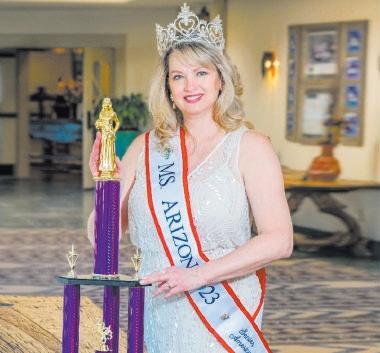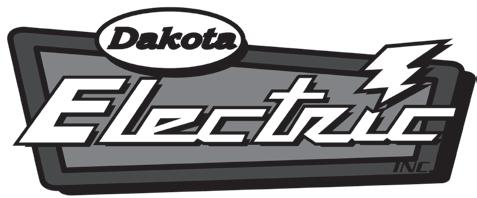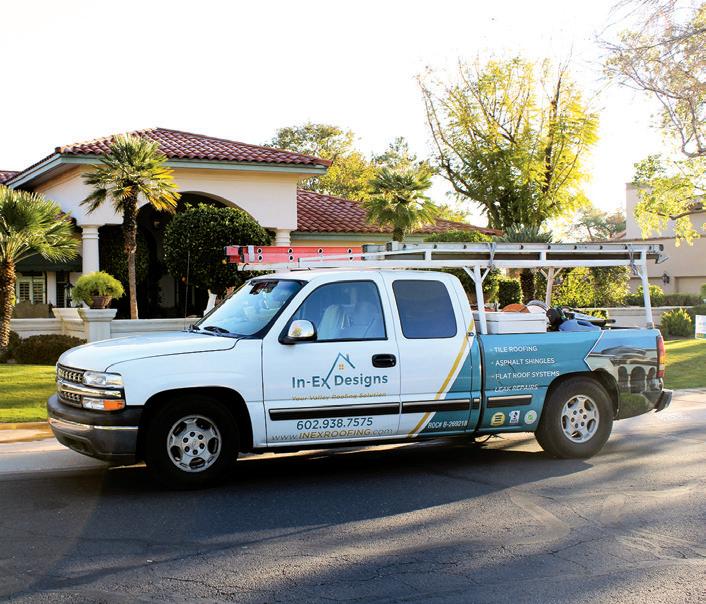
Inside This Week



Wednesday, August 16, 2023

www.ahwatukee.com





Wednesday, August 16, 2023

www.ahwatukee.com
After months of unfounded rumors, it’s nally come to pass: Wilson Gee and his partners last week sold the Ahwatukee Golf Club to a Litch eld Park couple who also own a course in Avondale.
Charles and Lisa Gibson, operating as Free Drop LLC, paid $3.2 million for the course, according to real estate tracker vizzda.com.
Built in 1976 and owned by Bixby Village Golf Course Inc. since 2006, the 141-acre site
includes an 11,868-square-foot clubhouse and an 18-hole par 72 championship golf course that was designed by the late professional golfer and pilot John Guthrie Bulla. Charles Gibson hit the ground running as soon as the deal was sealed. He deferred an interview with the Ahwatukee Foothills News for a few weeks, saying he was too busy refurbishing the grounds. is week, for example, he was resurfacing the parking lot and having a crew renovate the tired clubhouse interior.
“I’m super busy, as you might understand,” said Gibson, a professional golfer who played on the Arizona State University golf team in the early 1970s.
e Gibsons also own the Coldwater Golf Course near the Phoenix International Raceway in Avondale.
at 18-hole course, which includes a clubhouse capable of hosting gatherings of up to 200 people, has drawn largely favorable re-
see GOLFER page 11
For only the second time in six years, a Tempe Union governing board will be looking for a new chief executive following the superintendent's surprise “retirement."
Following a 50-minute closed-door meeting on Aug. 9 that had been scheduled on short notice after another executive session on Aug. 7, the Governing Board accepted Dr. Kevin Mendivil’s resignation and appointed Dr. Stacia Wilson as interim superintendent. Wilson, who as associate superintendent was the district’s second in command, is a product of the Tempe Union High School and Tempe Elementary school districts who has spent virtually her entire 26-year educa-
see LEADERSHIP page 16



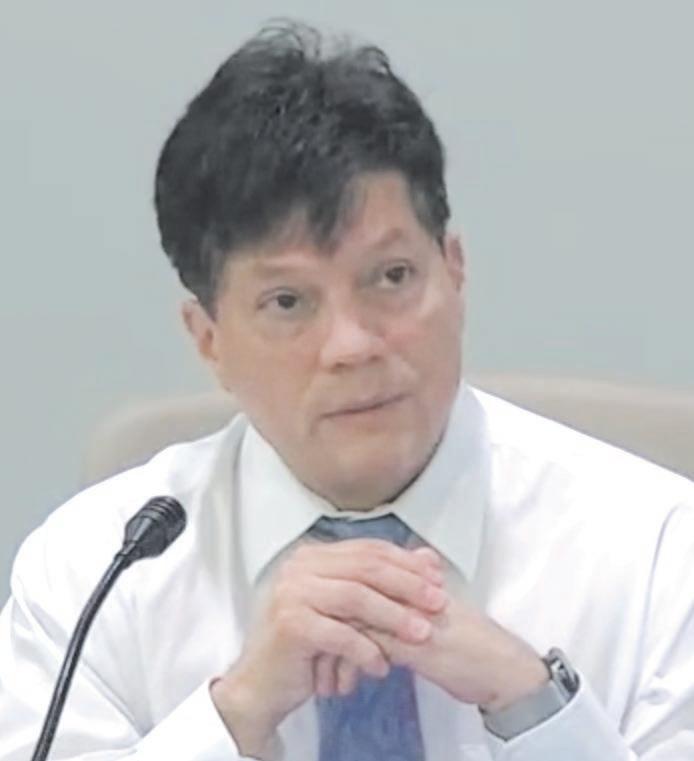
Dr. Kevin Mendivil, seen here at a tense Aug. 2 board meeting, had a year to go on his contract with the district. (Youtube)




















The Ahwatukee Foothills News is published every Wednesday and distributed free of charge to homes and in single-copy locations throughout Ahwatukee Foothills.
Times Media Group:
1900 W. Broadway Road, Tempe, Arizona, 85282
Main number: 480-898-6500
Advertising: 480-898-5624
Circulation service: 480-898-5641
Steve T. Strickbine VICE PRESIDENT
Michael Hiatt
ADVERTISING STAFF
National Advertising Director
Zac Reynolds 480-898-5603 zac@ahwatukee.com
Advertising Sales Representatives:
Laura Meehan, 480-898-7904, | lmeehan@ahwatukee.com
Katie Mueller, 480-898-7909 kmueller@TimesLocalMedia.com
Classifieds/Inside Sales:
TJ Higgins, 480-898-5902 tjhiggins@TimesLocalMedia.com
Steve Insalaco, 480-898-5635 sinsalaco@TimesLocalMedia.com
NEWS STAFF
Executive Editor:
Paul Maryniak, 480-898-5647 pmaryniak@ahwatukee..com
GetOut Editor: Alex Gallagher | 843-696-6442 | agallagher@TimesLocalMedia.com
Sports Editor:
Zach Alvira 480-898-5630 | zalvira@TimesLocalMedia.com
Production Manager: Courtney Oldham | 480-898-5617 production@TimesLocalMedia.com
Designer: Ruth Carlton | rcarlton@TimesLocalMedia.com
Photographer:
David Minton | dminton@TimesLocalMedia.com
Reporters:
Cecilia Chan. 480-898-5613 | cchan@@TimesLocalMedia.com
Circulation Director:
Aaron Kolodny 480-898-5641 | aaron@TimesLocalMedia.com
Ahwatukee Foothills News is distributed by AZ Integrated Media, a circulation service company owned by Times Media Group. The public is limited to one copy per reader. For circulation services please contact Aaron Kolodny at aaron@TimesLocalMedia.com.
To start or stop delivery of the paper, please visit: https://timespublications.com/phoenix/ or call 480-898-7901
To get your free online editiona subscription, please visit: https://www.ahwatukee.com/e-subscribe/
WRITE A LETTER
To submit a letter, please include your full name. Our policy is not to run anonymous letters. Please keep the length to 300 words. Letters will be run on a space-available basis. Please send your contributions to pmaryniak@ahwatukee.com.
The Ahwatukee Foothills News expresses its opinion. Opinions expressed in guest commentaries, perspectives, cartoons or letters to the editor are those of the author.
The content and claims of any advertisement are the sole responsibility of the advertiser. The Ahwatukee Foothills News assumes no responsibility for the claims or content of any advertisement.
© 2023 Strickbine Publishing, Inc.
During the Kyrene Governing Board meeting Aug. 8, Vice President Michelle Fahy made an unusual request.
While minutes of previous meetings are almost routinely approved without a second thought, Fahy found those from the board’s July 18 meeting lacking.
Fahy had pulled the minutes from the consent agenda – where everything on it is approved unanimously – because “we had a fairly robust discussions approving our SROs and I would just like the minutes to reflect that discussion….And so I’d like to see it documented a little more completely in the minutes.”
Fahy was referring to the July 18 study session at which the administration discussed data from a survey of parents, students and staff about their attitudes toward – and perceptions of – school resource officers on middle school campuses.
That prompted a lengthy criticism by board member Wanda Kolomyjec, who said she not only adamantly opposed SROs but that she rejected the validity of the survey itself. She suggested students with negative attitudes toward uniformed officers on campus or had had unpleasant encounters with them would not have responded candidly to the questions.
Arguing instead for more counselors on campuses, Kolomyjec hammered at SROs, citing various professional studies and Education Week magazine that in one way or another assert that SROs can’t prevent school shootings and that their presence and activities harm children.
“I think most parents want them in the schools because they’re going to make students safer, which is completely understandable thing. And I also want our students to be safe,” Kolomjec said. “The problem is popular wisdom points to








armed police officers just as a way to do that. But contrary to this common perception, there are decades of data that point to the opposite conclusion.”
“If you still choose to fund school police at this point, you must know that you are following a racist policy that negatively impacts the health and safety of Black and Latino students,” she said.
“I know I’m in the minority here,” Kolomyjec said at one point. “I have to look at how what we see nationally, what we see as a habit, what we see as a persistent issue in communities and how it affects our most marginalized students again and again and again. … And so I will continue to be concerned and unable to support SROs.”
Kolomyjec cast the lone “no” vote in a 4-1 approval of a contact with Phoenix Police to provide officers at all three middle schools in Ahwatukee at a total cost of $498,000 – most of which is already covered by a state safety grant.
Chandler and Tempe cover most of the district’s cost of SROs on the other middle school campuses.
While board member Triné Nelson

asked a couple questions, Fahy was the only other board member to speak at length during the discussion. She complimented Kolomyjec for bringing up the subject but disputed her approach.
“I think it’s important for our community to hear that we are looking at this issue carefully, thoughtfully, that we’re





not just, this is not just like a rubber stamp,” Fahy said.
She noted the survey question that asked students if SROs made their campus safer and said, “I think there really is no way for somebody to answer that.” She also suggested some of the survey questions could have been phrased
more accurately.
But Fahy wasn’t about to throw the baby out with the bath water. She suggested the district make videos detailing Kyrene SROs’ activities.
“I think that I understand, Wanda, your concerns and I understand what the national data says,” Fahy told Kolomyjec, stating the videos could acknowledge what some of the national studies claim but that show “we’re doing all of these things to try to circumvent that.”
“I think at some point, we have to say we have a high awareness level of the issues with SROs and we’re doing all these things to prevent those negative things from happening,” Fahy continued. “I mean, it’s not going to be perfect, but I wouldn’t say to the point of ‘nationally SROs are a big problem, so they must also be a big problem here in Kyrene and therefore we’re not going to have them.’
“I don’t think that’s a good strategy. I think that we are highly aware of the problems across the nation of SROs. I think we have a very detailed set of information here and data that show that
see SRO page 5





this is not how our SROs are used in our schools, nor is it how the majority of our students perceive them.
“I agree we need more data. We need to continue to get the data we need to try to get more data. But I don’t think our data says ‘oh, you really shouldn’t do this now because this is terrible data.’…. I don’t think that this is the time for us to take a step back because I think that … you can’t be a part of the change if you don’t try to change things and do things right. And I feel like we’re making a lot of efforts to do it the right way," Fahy continued, adding:
“And so maybe if we continue to do it the right way or the better way, we can change that nationwide perception of the negativity of SROs and hopefully honestly change the perception of the negativity of SROs of children and families in our community.”
The survey was part of the administration’s presentation on the actual work of SROs on Kyrene campuses and their value to students and the community.
Among other things, they provide 180 hours of law-related education to stu-
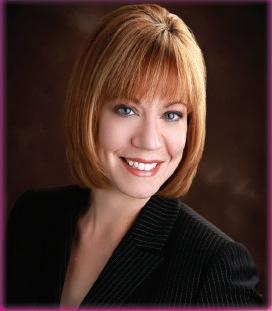
dents, staff and even some community members. They must be on campus 80% of their time while school is in session and “are building relationships and rapport with students,” said Josh Gilder, director of Kyrene’s community education services.
“They are not initially responding to student discipline incidents on campus,” Gilder said. “They are not assisting in classroom management. They’re not investigating low-level discipline referrals or disciplinary action and just like our counselors they’re not assigning consequences. They’re also not criminalizing juvenile behavior. And again, like our counselors, they’re not a substitute for classroom teachers.”
The survey of all five middle school communities included answers from 505 parents and guardians, 252 staffers and 3,536 students. Among students, 40% were white, 31% Hispanic, 10% multiracial, 10% Black and 9% Asian, Native American or Pacific Islander.
The survey showed that while threequarters of parents and guardians and
see SRO page 9
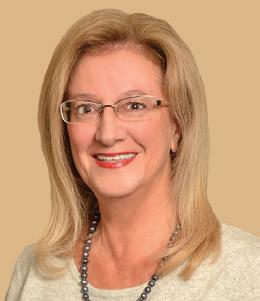


































Ajudge has rebuffed efforts by the Arizona Democratic Party to keep a potential competitor and its candidates off the 2024.
Maricopa County Superior Court Judge Katherine Cooper said the complaints of legal flaws in the paperwork filed by the No Labels Party with Secretary of State Adrian Fontes to get ballot standing in the state do not stand up under scrutiny.
original lawsuit.
Morgan Dick, executive director of the Arizona Democratic Party said the organizations is “evaluating all of our options.’’
But Dick said the lawsuit is about more than additional ballot competition. She said the litigation is designed to ensure that Arizona voters know “who is bankrolling this organization as they inject themselves into our elections.’’
No Labels, founded in 2009, has the stated goal of combating what it calls the “polarized political climate’’ that has led to the most prominent voices “often found the farthest from the center.’’





The new ruling is a setback for the Democrats who made no secret in filing suit earlier this year they believe having the No Labels Party on the ballot “will make it more difficult to elect Democratic Party candidates.’’


But Cooper gave an attorney for the Democrats the opportunity to refile the case in the next month based on some new allegations that were not part of the
Its website says it is creating an “insurance plan that would allow a Unity ticket to run in 2024 if the two parties select unreasonably divisive presidential nominees’’ – terms it does not define.
A third-party contender could have
see
page 7
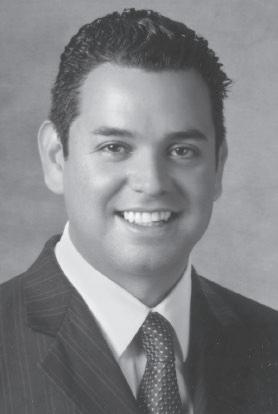
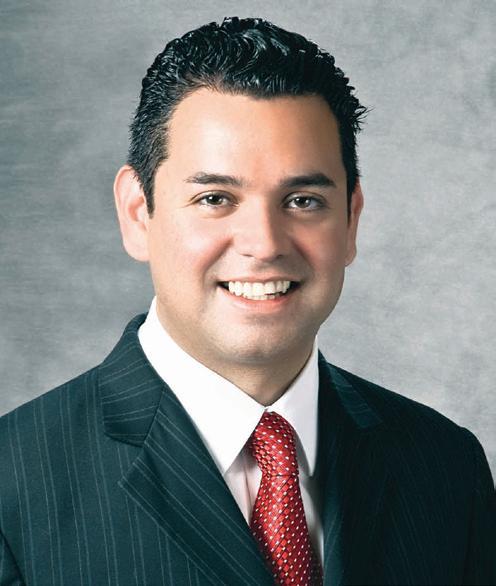
DEMS from page 6
implications for Democrat Joe Biden in 2024, particularly in Arizona. He only narrowly edged out Donald Trump by 10,457 votes in 2020 and a Gallup Poll last week showed him trailing Trump by 17 points.
Roy Herrera, attorney for the Democrats, complained that No Labels is organized under a section of the Internal Revenue Code as a “social welfare’’ organization, thereby limiting what it can spend on political purposes.
What that IRS status also means, Herrera said, is that the No Labels Party is not required to disclose its contributors, a requirement that exists in state law for other recognized political parties in Arizona.
“To date, No Labels has not publicly disclosed its donors, leaving the sources of much of its funding largely unknown,’’ the lawsuit said.
“Nor has No Labels publicly identified the donors behind the initiative to have it certified as a political party in Arizona, despite federal laws requiring political party committees spending more than $5,000 to influence a federal election to identify their donors in filings with the Federal Election Commission.’’
The lawsuit focused instead on the decision by Fontes to conclude it meets the qualifications for ballot status in Arizona.
Democrats said the affidavit containing the legally required number of signatures to qualify ballot status should read that “the signers thereof be recognized as a new political party.’’
Instead, it said “the assigners of the attached petitions.’’
Cooper essentially called that a difference without a distinction.
“There is no statutory requirement that the affidavit use these exact words,’’
the judge said. And she said all that is needed is “substantial compliance.’’
“The complaint does not allege that anyone was confused or misled by the phrase,’’ Cooper wrote.
The judge was no more impressed by arguments by Democrats that the process to petition for party status was not followed.
That process required No Labels to submit petitions with at least 34,127 valid signatures to the Secretary of State’s Office. It submitted 41,663, according to Fontes.
It also required there be separate affidavits of at least 10 people, attached to the signatures, asking for party recognition. Herrera complained that No Labels continued to collect signatures after those affidavit sheets were signed.
Cooper ruled, “The statute does not mandate that the verification be signed only after all signatures in support of the petition have been collected,’’ she wrote. “Moreover, the court has no authority to insert such a requirement.’’
Cooper refused to consider a separate late argument presented by Democrats that cited a letter from No Labels to Fontes saying it will not participate in the state’s primary election and therefore does not need to follow other laws about formation of a committee or filing campaign finance reports.
What that means, Herrera argued, is that the petition to seek party status is defective because signers were falsely told it would participate in the primary.
None of that, the judge said, was in the initial complaint, meaning she has no authority to consider it. But she did give the Democratic Party until Sept. 11 to move to amend its complaint and have that issue considered.




























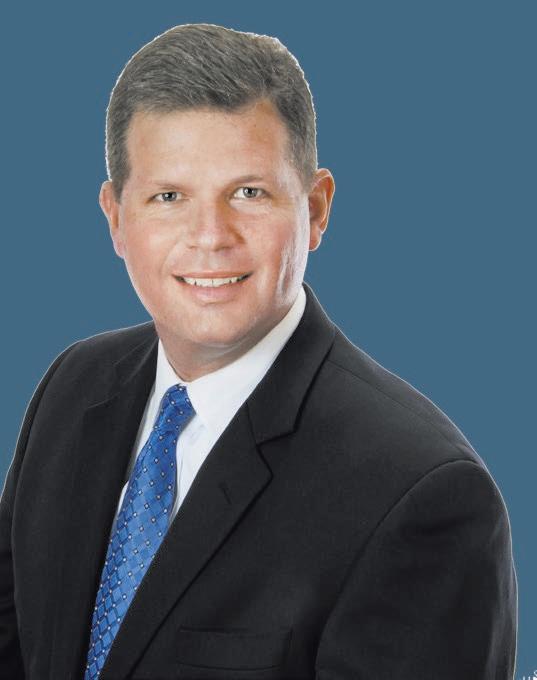



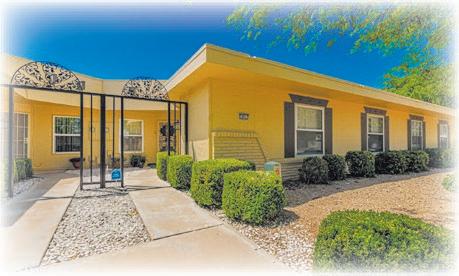




















































































































Kyrene broke down by race and ethnicity the respondents who answered several questions about SROs on middle school campuses. (Kyrene School District)
96% of staff knew their school had an SRO, only 43% of students were aware.
An overwhelming number of students agreed or strongly agreed with four questions: “Having an SRO make school a safer place.” “I feel comfortable reporting dangerous or suspicious activity to my SRO.” “The SRO treats all students with respect and fairness” “I know what the SRO does on campus.”
A great majority of staffers and parents/guardians also agreed or strongly agreed with those questions.
The lowest percentage involved parents and guardians on one of those questions. The survey reported 56% agreed or strongly agreed with a variation of the question asked students: “The SRO at my child’s school treats all families with respect and fairness.”
Superintendent Laura Toenjes said it seemed Kolomyjec was referring to SROs whose role is more of a “security officer rather than a relationship-building officer.”
She also said that of 32 students she
interviewed, 11 “that had engaged with an SRO due to inappropriate behavior, talked about the fact that the SRO was very positive with them and that they had a very positive interaction with the SRO. And I think that’s significant to note because the students made it very clear that they maybe did not always feel the same way about their administrator.”
Toenjes said Kyrene’s SROs have a “much bigger role” than SROs on high school campuses might have and that at Kyrene, SROs are “part of our whole wrap-around service” to children.
But Kolomyjec was not persuaded, stating “What I’m talking about isn’t SROs. I’m talking about police in the United States. I don’t believe in police in schools. And one of the reasons I don’t believe they belong in schools is because I don’t think they fulfill the role that we think they do, which is keep us safe. I don’t think they do.
“And I’m on the other side of what they do. They traumatize students and I don’t think they belong in the school.”






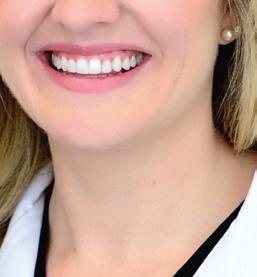















tile throughout with carpet in bedrooms only! Smart home technology. 14 seer HVAC unit. Large master suite with walk in closet, double sinks and walk in shower. Two of the secondary bedrooms also have walk in closets. Faux wood blinds throughout. Covered back patio. NORTH FACING BACK YARD! Low maintenance front and backyard landscaping.
Listed for $815,000
Remodeled home in a transitional contemporary style! 2,626 sf, 4 bedrooms and 2.5 bathrooms. Hillside lot with an east facing back yard! 2020

Mesa, AZ - When it comes to chronic pain and/ or neuropathy, the most common doctor-prescribed treatment is drugs like Gabapentin, Lyrica, Cymbalta, and Neurontin. The problem with anti-depressants or anti-seizure medications like these is that they offer purely symptomatic relief, as opposed to targeting and treating the root of the problem. Worse, these drugs often trigger an onset of uncomfortable, painful, and sometimes harmful side effects.
The only way to effectively treat chronic pain and/or peripheral neuropathy is by targeting the source, which is the result of nerve damage owing to inadequate blood flow to the nerves in the hands and feet. This often causes weakness and numbness.

As displayed in figure 1 above, the nerves are surrounded by diseased, withered blood vessels. A lack of sufficient nutrients means the nerves cannot survive, and thus, slowly die. This leads to those painful and frustrating consequences we were talking about earlier, like weakness, numbness, tingling, balance issues, and perhaps even a burning sensation.
The drugs your doctor might prescribe will temporarily conceal the problems, putting a “BandAid” over a situation that will only continue to deteriorate without further action.
Thankfully, Mesa is the birthplace of a brand new facility that sheds light on this pressing problem of peripheral neuropathy and chronic pain. The company is trailblazing the medical industry by replacing outdated drugs and symptomatic reprieves with an advanced machine that targets the root of the problem at hand.
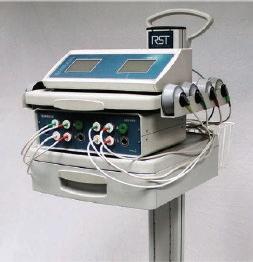
Effective neuropathy treatment relies on the following three factors:
1. Finding the underlying cause
2. Determining the extent of the nerve damage
(above 95% nerve loss is rarely treatable)
3. The amount of treatment required for the patient’s unique condition
Aspen Medical in Mesa, AZ uses a state-ofthe-art electric cell signaling systems worth $100,000.00. This ground-breaking treatment is engineered to achieve the following, accompanied by advanced diagnostics and a basic skin biopsy to accurately analyze results:
1. Increases blood flow
2. Stimulates and strengthens small fiber nerves
3. Improves brain-based pain
The treatment works by delivering energy to the affected area(s) at varying wavelengths, from low- to middle-frequency signals, while also using Amplitude Modulated (AM) and Frequency Modulated (FM) signaling.
It’s completely painless!
THE GREAT NEWS IS THAT THIS TREATMENT IS COVERED BY MEDICARE, MEDICAID, AND MOST INSURANCES!!
Depending on your coverage, your peripheral neuropathy treatment could cost almost nothing – or be absolutely free.
The number of treatments required varies from patient to patient, and can only be determined following an in-depth neurological and vascular examination. As long as you have less them 95% nerve damage, there is hope!
Aspen Medical begins by analyzing the extent of the nerve damage – a complimentary service for your friends and family. Each exam comprises a detailed sensory evaluation, extensive peripheral vascular testing, and comprehensive analysis of neuropathy findings.
Aspen Medical will be offering this free chronic pain and neuropathy severity evaluation will be available until August 31st, 2023. Call (480) 274-3157 to make an appointment.
Due to our very busy office schedule, we are limiting this offer to the first 10 callers. YOU DO NOT HAVE TO SUFFER ANOTHER MINUTE, CALL (480) 274-3157...NOW!!
We are extremely busy, so we are unavailable, please leave a voice message and we will get back to you as soon as possible.
GOLFER from page 1 views on various social media sites.
Tripadvisor.com shows a 4 out of 5-star rating for the course, which runs through a residential development.
The website golfnow.com called it a “friendly facility” that “enjoys a devoted following of West Valley golfers who return again and again to this highly playable, fun layout that provides excellent value” and includes three lakes.
“Unlike so many courses in the Valley of Phoenix that sit on flat ground,” golfnow. com states, “Coldwater Golf Club has the advantage of rambling on rolling terrain. Course architect Forest Richardson took full advantage in crafting a layout with elevated tee boxes, constantly moving fairways that meander up and down, and intriguing green complexes.”
Arizona Golfer, the state’s oldest golf newspaper, also provided some background information on Gibson, stating “his first exposure to the West Valley came in a qualifying round for the Arizona State University Golf Team in the fall of 1971.
“Playing golf had been a priority for some time up until this point. His commitment to golf led to 4 years at Arizona State University, a 2 time All American and 5 years on the PGA TOUR.
“This experience served as a perfect entry into the other side of golf – the business side. He served as a general partner and manager of several public facilities, contract management of multiple facilities and owner/operator of three courses,” Arizona Golfer reported.
It said Charles’ wife Lisa handles the financial and accounting side of the business while their son Cole Gibson is the Coldwater general manager and their couple’s
long-time friend, Pete Mason, is director of gold and tournament operations.
“Together they have well over 100 years of experience in golf competitions and golf operations,” Arizona Golfer reported.
It also quoted Gibson, who lived in California before moving to Litchfield Park, as stating they looked for five years for a golf facility across the Valley.
During that time, he told Arizona Golfer, they wanted to buy a course where “we felt our family could achieve success with, as well as become a part of a community that we have already come to love and appreciate.”
“We talk daily about improving the course conditions, golf operations and food service. Our goal is to provide a total experience that should always include a fantastic golf course facility, friendly atmosphere and great burgers, dogs, nachos and cold beverages,” he also was reported saying.
Given his energetic start in Ahwatukee last week, his interview with Arizona Golfer suggests he is bringing the same passion to Ahwatukee Country Club that he brought to Coldwater.
"We are totally committed to making improvements throughout the facility,” he told Arizona Golfer, stating the remodel of the Coldwater clubhouse included new granite, paint and flooring.
Gee told AFN that while he originally had not put the Ahwatukee Country Club on the market, he and his partners decided to sell because “I’ve got too much on my plate.”
Among those things is a nonprofit Gee is starting to help education in Los Angeles.
Gee at one point owned all four golf courses in Ahwatukee and has gradually sold off all but Ahwatukee Lakes, where he and his partners have been the object


of a lawsuit filed by two residents in 2014, a year after he shut down the 18-hole site.
His attempts to sell Ahwatukee Lakes ran into a buzz saw of furor among a majority of the course’s surrounding 5,400 homeowners, who stopped an effort by the True Life Companies to turn the site into a complex of 290 homes, a small farm, a new location for Desert Garden Montessori and hiking trails.
After a long legal battle that even went up to the United States Supreme Court, attorney Tim Barnes, representing homeowners Linda Swain and Eileen Breslin, persuaded Superior Court judges to order Gee’s restoration of Ahwatukee Lakes.
While Gee has largely restored the Lakes, he has been working with Barnes and his clients on a number of finer points – including the planting of several hundred low-water-use trees and a real clubhouse.
Originally Gee had tried to replace the clubhouse – leveled by a never-solved arson – with a field-office-type building, a judge ordered him to build a more appropriate facility.
Gee said he has an architect drawing up plans for the clubhouse and that he expects it will take nine to 12 months for the project to make its way through the City of Phoenix planning process.
Gee has managed to sell the other two courses he owned in Ahwatukee.
He sold the Club West Golf Course twice – first in 2017 to an investor who within
about seven months failed to keep up payments on a $1.3 million promissory note.
Gee took back Club West and sold it in 2019 for $750,000 to a four-man group of investors organized as The Edge.
But ever since The Edge lost an early 2020 effort to sell three parcels of the course for homes so it could finance a restoration of the course, the four businessmen have been tied up in seemingly endless litigation with a group of homeowners organized as the Club West Conservancy.
The Conservancy alleges that Shea Homes, which owned the Club West Golf Courses’s land use rights before giving them to The Edge, has violated sales agreements for homes around the course.
It contends those sales agreements require the land to be maintained as a championship 18-hole golf course – a position that The Edge and Shea Homes denies.
A judge has set a trial for next March on that case and the course itself long ago deteriorated into a 165-acre piece of desert.
Gee last year sold the Foothills Golf Course for $4.7 million to a California family-run real estate investment company that has hired world-renown Troon, which has been upgrading the course and the clubhouse.
Gee said that at least for now, he and his partners will continue owning and operating their only other course in the Valley –The Duke in Maricopa.













Suffering through summer in the Valley without monsoon rains is like a kid getting birthday cake but no ice cream.
The 2023 season has been “a dud, so far, as the monsoon pattern has not set up for any period of time,” said Paul Weser, a geography professor at Scottsdale Community College who did his doctorate on monsoons.
Even so, the Scottsdale Fire Department tweeted this week for drivers to stay alert:
“This monsoon season may not have many storms, but when we do get rain, it can be dangerous to be on the streets. Slow down on wet roads and please do not try to cross flooded washes.”
While storms of the last two summers submerged some Scottsdale roads, this year’s monsoon has been as dry as a James Bond martini.
Last month, Weser was hopeful that pressure systems would shift, as they often do at the end of July or beginning of August.
“They did not.”
On Aug. 8, some parts of the Valley received a few splashes of rain.
That ended a long, dry stretch – but hardly turned on the rain taps.
A map by the National Weather Ser-
vice compared this year’s Valley weather to a three-decade average.
Weser pointed out the 30-year average shows a typical July has a high-pressure center over New Mexico, with the western portion over Arizona, “where it can transport moisture into the region from the south and southeast …
“This would be our normal summer pattern that produces our monsoon thunderstorms during the season.”
Weser noted this July’s high pressure system “centered directly over Arizona … thus there has been little opportunity to draw moisture into the state.
“We have instead been situated under the high pressure system, which is air sinking and heating as it moves toward the surface. This is what has caused our record temperatures and dry conditions.”
According to the National Weather Service, prior to this year, Phoenix hit 119 five times: 122 (June 26, 1990); 121 (July 28, 1995); 120 (June 25, 1990); 119 (June 20, 2017); and another 119 (June 29, 2013).
This July, Phoenix hit 119 three times (July 18, 19 and 24), with an average high of 114.7 – 8.2 degrees hotter than normal.
While north Scottsdale can be as much as 5 degrees cooler than Sky Harbor Airport, the official location for National








Weather Service Phoenix readings, parts of south Scottsdale are just as hot.
But there has been little relief from last month’s scalding temperatures.
Though monsoon storms can form quickly, a few days ago Weser was not optimistic about typical August rainfall.
“Will we get the typical pattern to set up once and for all for any period of time? My guess would be unlikely at this point,” Weser said, adding:
“Typically, by mid to end of August the pattern is starting to break down and on average totally gone by mid-September.”
Weser said the Valley usually gets as much as half of its annual rain from midJuly through August.
“It’s looking like we may not have as much as we had the last couple of years, which were really quite impressive,” Weser said. “You may remember the last couple of years we had tremendous amounts of rainfall.”
He cautioned that monsoon storms can be dangerous, particularly on occasions when “you have air coming from different directions and kind of collide …


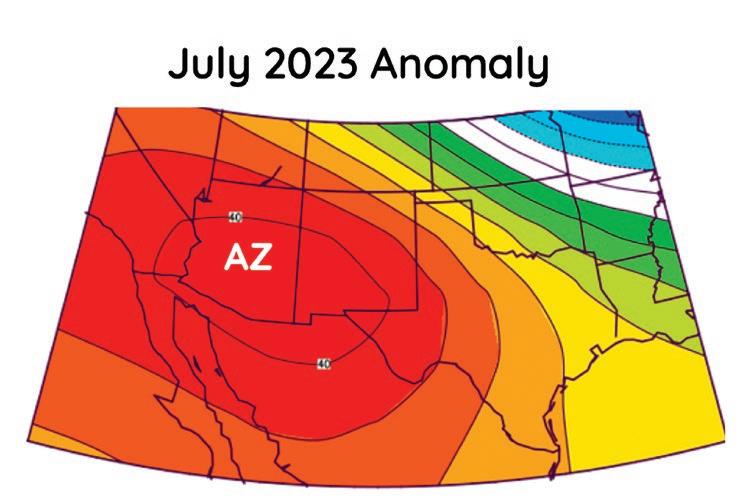
“And that's when we get a microburst.”
Micro-moisture has been the story this August.
Though there wasn’t much rain by the middle of last week, clouds at least helped cool down temperatures below 110.
This week, heat is likely to return.
“The high pressure shifts back over us for likely 110+ again next week,” Weser said.
“What is happening is that we have



some other smaller scale features in the atmosphere creeping in to prevent rain and pattern development. Kind of common as we get into August and the end of monsoon season.”
There is still hope for rain fans, however:
“What could still happen are surges of moisture from decaying tropical storms/ hurricanes in the eastern Tropical Pa-
cific,” Weser said.
“September is a peak time for these storms and if the moisture gets tapped by the regional wind patterns it can flow up the Gulf of California and into Arizona.”
He said these so-called “Gulf surges” can lead to impressive rain in September.
“These are not an annual feature of the monsoon,” he added, “so no way to predict what will happen.”

•Multi-slide
Windows
•
•
•Replacement Windows
Construction Windows
•New Construction Windows
- Bi-folding Doors
•Multi-slide - Bi-folding Doors
•Replacement Windows
Construction Windows
•Multi-Slide - Bi-folding Doors
•New Construction Windows
•Multi-slide - Bi-folding Doors
•Entry,

•
Interior Doors and Trim
•







French and Patio Doors •Barn Doors & Hardware •Interior Doors and Trim • VELUX® Skylights and Sun Tunnels •Security Doors & Retractable Screens SECURITY SCREEN DOORS ROOF WINDOWS AND SKYLIGHTS 602.508.0800 | liwindow.com 4454 E. Thomas Rd. | Phoenix, AZ 85018 •New Construction Windows






•Barn Doors & Hardware •Interior Doors and Trim • VELUX® Skylights and Sun Tunnels •Security Doors & Retractable Screens SECURITY SCREEN DOORS ROOF WINDOWS AND SKYLIGHTS 602.508.0800 | liwindow.com 4454 E. Thomas Rd. | Phoenix, AZ 85018 Mon-Thurs 8:30-5 p.m. | Fri 8:30-4 p.m. | Sat 9-2 p.m. | ROC#179513

tion career in Tempe Union.
She started as an English teacher at Desert Vista High in 1997 after earning her bachelor’s degree in English secondary education the previous year from Hampton University. She also holds a master’s degree and doctorate from Northern Arizona University.
According to a statement by the district last week, the board will conduct a search and provide details later.
The last time a governing board in the district conducted such a search following then-Superintendent Kenneth Baca’s announcement that he would be leaving after the 2017-18 school year, the board opted to look for candidates within Tempe Union’s administration.
Baca left his seven-year position in Tempe Union to become the superintendent of Madison School District in Phoenix and retired in spring 2021.
The board likely will be choosing a permanent successor to Mendivil before the November 2024 election, when three seats of its five seats will be on the ballot.
At least one current member, Berdetta Hodge, indicated she won’t be running again; she made that announcement after winning a seat on the Tempe City Council last year. Also up for reelection are board President Armando Montero and member Sarah James.
It was James who, at least publicly, may have started the chain of events that prompted Mendivil to abruptly retire well before his contract would be up for renewal next June.
During an Aug. 2 meeting, James
turned a relatively routine review of Mendivil’s proposed performance pay goal this semester into a polite but tense debate when she asked that it be revised to more closely align with new academic performance goals that the board is scheduled to vote on today, Aug. 16.
The proposed academic performance goals were formulated last month by the board and the administration in the wake of results from ACT tests taken last school year by all freshmen and juniors.
While those scores showed districtwide improvement over the 2021-22 ACT results, they also showed wide disparities in student achievement among the district’s six campuses and online program.
For example, in English Language Arts, Desert Vista and Corona del Sol were the only two schools where over half of all juniors showed proficiency in English Language Arts while only slightly more than a third of Marcos de Niza juniors showed proficiency in English.
Even greater disparities appeared in results for student subgroups broken down by race and disabilities.
Results showed that 75% of Native American juniors were not proficient in math. Other percentages showing a lack of proficiency included: Hispanics, 68%; students with disabilities, 94%; English language learners, 96%; and African Americans, 80%.
For English Language Arts, while 46% of all district students showed they were not proficient, twice that many English learners were not proficient.
A lack of proficiency in English for oth-

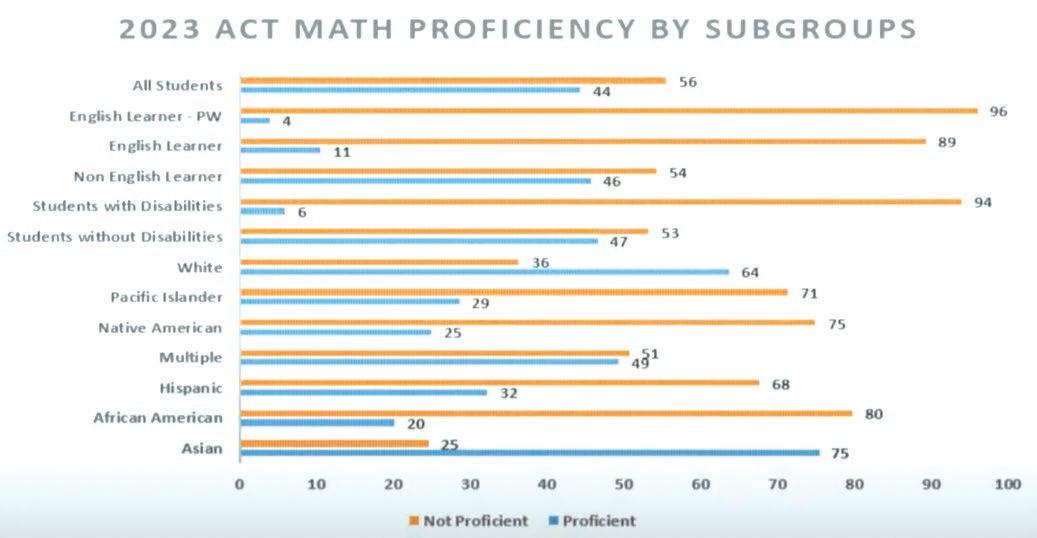
ACT test scores for math among Tempe Union juniors showed wide disparities among racial and ethnic groups as well as between disabled students and students without disabilities. (Tempe Union)
er “marginalized” groups included 90% of students with disabilities compared to 43% of students who are not disabled; 76% of Native Americans, 59% of Hispanics and 67% of African Americans.
Mendivil had proposed as his performance pay goal to come up with a way to measure the district’s progress on achieving the new academic performance goals. Measuring progress throughout the year has been a major concern of the board since the ACT results were disclosed.
The proposed district goals include elevating both freshmen and junior overall test results in the 2023-24 ACT assessments by 5% and increasing those student subgroups’ overall scores by 10%.
The district-wide goals for teachers and staff also call for reducing chronic absenteeism and increasing the number of students who apply for college aid by completing FAFSA application.
Under the terms of his contract, which had run from July 1, 2021, to June 30, 2024, Mendivil earned a base annual salary of $210,000 that was supplemented by $5,000 annually for membership fees in various professional organizations such as the Arizona School Administrators Association as well as “involvement in the community.”
His performance pay totaled up to $15,000 a year. In addition to standard benefits like health and disability insurance, the contract also provides an $800 monthly motor vehicle allowance.
James argued that Mendivil’s performance goal be more closely aligned with the district academic achievement goals.
“We’re going to hold our staff and teachers accountable for and I think there are things that we can look at as superintendent, you can dig into and help push along between now and December,” James told Mendivil at the Aug. 2 meeting, continuing a discussion they apparently had been having in private sometime earlier.
Although her position was contested by at least one board member, Andres Barraza, James seemed open to compromise, stating that even a reduction in absentee rates would be appropriate for Mendivil to list as a performance goal for this semester.
Mendivil appeared at times to balk, saying that implementing the district goals themselves would be a time-consuming process.
“I don’t want to scare them off because this is something very new to them,” he said at one point.
Montero had tried to move the entire conversation into an executive session and partly succeeded by convening a closed-door session on Aug. 7.
Mendivil may have already decided to quit by the time the board held its second session Aug. 9 since he was not at that meeting before members voted to go behind closed doors.
Board members are not allowed by law to discuss the contents of executive sessions.
In a release issued after that meeting, the district quoted Montero as stating ““We appreciate Dr. Mendivil’s longtime commitment to the students and
see LEADERSHIP page 21























It started with a pretty understandable notion when one owns a piece of desert and wound up producing one of Mesa’s – and Arizona’s – most recognizable icons.
Little did Alice and Ted Sliger realize when they decided in 1939 to dig a well for drinking water for their gas stationstore that they’d strike a different kind of liquid gold on the land they had purchased three years earlier just east of the Mesa city line.
Instead of drinking water, the couple discovered thermal mineral springs that inspired them to build the Buckhorn Mineral Baths and Wildlife Museum.
The 102-degree mineral springs became the anchor for a full resort complex frequented by sports and entertainment celebrities.
Now, the Mesa Historical Museum is opening an exhibit that recounts the colorful past of both the Buckhorn Baths and its original owners with never-be-

fore-seen artifacts from the site’s glorious Old West past.
“It just seemed like it was the right

Aug. 19, and runs through next July.
“In the three-and-a-half years I’ve been here, probably one of our most popular questions is ‘What’s happening with the Buckhorn?’” she continued. “So we thought, ‘Let’s just do an exhibit so we can talk about it.’”
There’s a lot to talk about – and to see –in the exhibit, especially now that the site at Main Street and Recker Road has been closed for nearly 25 years and is fenced off by the new owner, who plans to build an apartment complex surrounding it.
The site’s healing waters attracted celebrities, especially professional athletes and specifically professional baseball players.
“Arguably, the Buckhorn was a principal influence on enticing Major League Baseball to begin annual spring training in Mesa and the Valley,” Ricci said.
time to showcase the Buckhorn,” museum Executive Director Susan Ricci said of the exhibit, which opens Saturday,
The Wildlife Museum’s 400 pieces of taxidermy – now the property of Arizona
see EXHIBIT page 20





























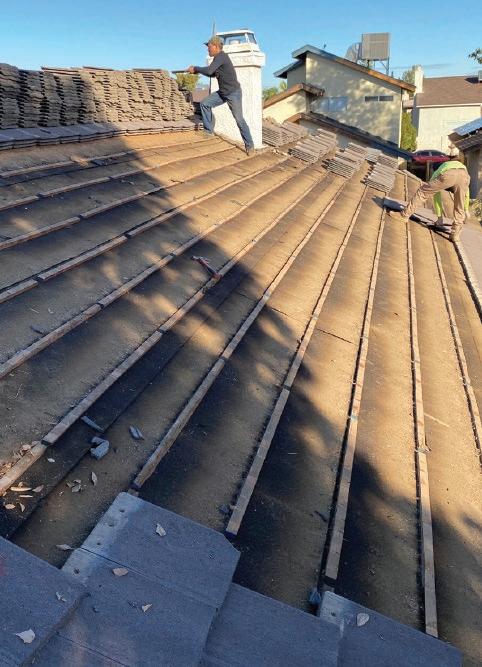




EXHIBIT from page 18
State University’s School of Life Sciences – also was a tourist magnet.
And there were dozens of quirky artifacts, such as furniture made largely of horns from bulls, that added to the site’s allure.
Ricci cited less palpable but equally important aspects of the Buckhorn, which is on the National Register of Historic Places and has been so revered by locals that voters had authorized the city to buy it, though the sale never materialized.
“A lot of people drive by there and they see it, and they want to know what’s happening to it because the property has degraded,” she said. “They had community barbecues – and people still remember those old community barbecues because it was part of spring training.”
“The Buckhorn has also gifted us we have quite a lot of artifacts and so that was another reason to do the exhibit. We have all this great art furniture and a lot of baseball memorabilia and tons and tons of pictures,” Ricci said.
“We also have a lot of Alice’s old ledgers that she kept. She kept really detailed notes on all the different guests that came to the Buckhorn.”
The Mesa Preservation Foundation owns those binders “and those are going to be interesting to go through and look at Alice’s notes and see some of the baseball players who signed in an came through the Buckhorn,” Ricci said.
“It was so famous and people from all
over the United States would come and stay.”
The thermal springs gave the Sligers a rags-to-riches life.
They constructed a bathhouse capable of accommodating up to 75 visitors daily, along with charming Pueblo Revival cottages for overnight guests. The site evolved into a complex of various amenities, including a café and dining room, beauty parlor, gift shop, gas station, post office, wildlife museum, another museum of Native American relics and an 18-hole golf course.
Ted Sliger died in 1984 and Alice continued to live at the Buckhorn, overseeing the business. In 1999 at age 90, she reluctantly closed the business because its day-to-day operation of the business she and Ted ran for 65 years had become too much for her. She died at age 103 in 2010.
The artifacts from that business are varied and numerous, ranging from custom-made furniture to specially made Western clothing to ornate saddles.
“We also inherited tons of home movies that Alice took,” Ricci said, explaining the reels ahd been stored for decades in an old refrigerator.
“So I got a grant to digitize all these movies and we put together a montage of video clips,” she said, noting some movies record the Sligers’ trip to Japan
see EXHIBIT page 21
as the Giants’ guests.
“There’s some baseball footage from the game of the Tokyo Giants playing our Giants,” Ricci said. “There’s home movies of Alice and Ted dressed in kimonos and touring around Japan. We even have one of her cameras that we’re going to put on display.”
“One of my other favorite things is the actual massage table that came from the baths,” Ricci said. “Many, many baseball players who came here for spring training have laid on that table and gotten massages and we have tons of pictures of them posing in their towels on the scale getting weighed in.
“Horace Stoneman, who owned the Giants, he felt that that was the ideal place for his guys to lose a little excess winter weight. They exercised, could run around.”
Stoneman “really believed in the therapeutic benefits of the spa,” she
added, “and those players came again and again, then ended up bringing their families.”
Visitors also can see other exhibits after inspecting the Buckhorn relics, including one on Spring Training as well as the Cactus League Hall of Fame, another featuring the mesmerizing art of the late Karen Kuykendall and exhibits on the history of Mesa’s founding families and the Salt River Pima-Maricopa Indian Community exhibit that celebrates the Onk Akimel O’odham and Piipaash cultures.
WHAT: Mesa Historical Museum
Where: 2345 N. Horne Road, Mesa.
Hours: 10 a.m.-4 p.m. Tuesday through Saturday.
Tickets: From $4-$7.
Info: 480-835-2286, info@mesamuseum.org, mesahistoricalmuseum.com. LEADERSHIP
employees of our district.
“After a 37-year career in education, we wish him all the best in his much deserved retirement,” Montero said. “All five board members have the utmost confidence in the leadership of Dr. Wilson to keep the District moving forward in the right direction.”
Mendivil joined TUHSD in 2014 and served in several different roles prior to becoming superintendent in 2018. Previously he had been a special education teacher, school principal and human resources director for Mesa Public Schools.
“As I prepare to embark on the next chapter of my life, I leave with the utmost confidence that the future of Tempe Union is bright and will be in good hands,” said Mendivil said in the dis-
trict’s release, adding:
“The leadership team for whom I have been privileged to work with consists of capable and caring individuals who share my passion for educational excellence and for improved student outcomes.”
A Desert Vista teacher from 1997 to 2007, Wilson became assistant principal of activities in 2007, then assistant principal of academics in 2013, and then principal in 2015 until 2018, when she became associate superintendent.
Mendivil is the second superintendent in the East Valley to abruptly resign this summer.
Two months ago, Dr. Dawn Foley resigned as superintendent of the Higley Unified School District only months after the board had extended her contract.







Astate hotline has helped thousands of victims in the two months since state officials uncovered a string of fraudulent Medicaidfunded addiction care facilities in Arizona, but the exact scale of the problem is still unknown.
Navajo officials estimate that as many as 8,000 tribal members may have been affected by the scam, and the Arizona Health Care Cost Containment System said it has provided aid to more than 3,000 – including 22 fraud victims that it has returned to other states.
Confirmation of those out-of-state cases followed a July letter from Sen. Jon Tester, D-Mont., citing reports of tribal members in Montana who were lured to Arizona with the promise of treatment.
Tester criticized AHCCCS for letting the scams “plague Arizona’s Tribal Communities for so long that it spread to other States,” and the Centers for Medicare and Medicaid Services for failing “to identify this fraudulent waste of taxpayer dollars in the agency’s oversight capacity.”
“State Medicaid Programs and CMS share responsibility for ensuring that Medicaid is used to deliver health care services and not misused for fraud, waste or abuse and it’s clear that responsibility was not taken seriously,” Tester wrote.
A CMS spokesperson said the agency has conducted analyses to determine the impact of the scams on Medicare overall and on other states’ Medicaid programs. It found that there has been minimal exposure in other states’ programs, the spokesperson said.
The review followed Arizona Attorney General Kris Mayes’ announcement in May of the discovery of the Medicaid scams, what she called “one of the biggest scandals in Arizona history.”
Mayes said the facilities, which posed as behavioral health centers, primarily preyed on Native Americans who were vulnerable, unhoused and struggling with addiction.
Homeless people and those living on reservations were coerced to enter into these facilities to participate in “outpatient treatments” with the promise of free food, housing and financial assis-

tance, said Mayes.
They were then pressured to sign up for AHCCCS, the state’s Medicaid system, which was then billed for treatments that often were not supplied.
In some instances, the facilities billed AHCCCS for the care of individuals with whom they were never in contact.
Mayes said that in one such instance, AHCCCS was billed for more than 13 hours a day for alcohol rehabilitation services for a 4-year-old.
In response, AHCCCS cut off payment to providers and set up the Sober Living Hotline, a service established to connect anyone affected by the scams with emergency shelter, transport and more.
AHCCCS officials said last month that the hotline’s operators had received more than 8,700 calls and provided 3,100 individuals with transport, emergency accommodation or connection to rehabilitation and behavioral health services.
The only official estimate of the potential overall scope of the problem comes from the Navajo Nation – and that estimate only extends to possible Navajo victims.
Navajo Police believe up to 8,000 people from the Navajo Nation may have been turned out from the fraudulent facilities following their closure.
The Navajo Nation issued an emer-
gency declaration in June, designating the fallout from the scams as a Public Health State of Emergency and allowing the allocation of emergency relief funds to find and provide aid to those displaced.
Navajo Police also established Operation Rainbow Bridge to reaching out to provide resources to Diné people affected by the scam and reuniting them with family if they wish.
Navajo Nation President Buu Nygren said in July that the tribe has been working with AHCCCS, while also funneling a lot of its own resources into finding and helping those affected.
Officials from the Navajo Nation Division of Public Safety, Division of Social Services and Department of Justice were all sent to Phoenix to lend a hand, he said.
“I really sent all the resources that I had, from the Navajo Nation, to try to help supplement some of the resources that they were providing,” Nygren said.
“At one point, we had, I think, up to 30 people down in the Valley,” he said. “It costs a lot of money to send people down to Phoenix, house them and hotel them at the same time.”
Nygren said he hopes AHCCCS keeps working to resolve “the issue that was created within the system there” while also channeling resources to help those
afflicted.
Tester urged AHCCCS and CMS to “place high priority on assisting the victims of these scams, particularly Montana’s Tribal members who have been left stranded in Arizona with no means to return home.”
Nygren said any assistance needs to include treatment, not just rushing people back to reservations where they might not be able to get proper care.
“The last thing we need to do is just quickly run people back to their home communities,” Nygren said. “My hope is that they’re relocating them into facilities in the Valley or Flagstaff or some of those areas where they can actually work with them.”
AHCCCS spokesperson Heidi Capriotti said the agency is making internal changes to prevent fraud on this scale in the future.
It announced at the end of June that it will no longer take requests for enrollment in the American Indian Health Program over the phone – requests now must be made in writing to AHCCCS by an Indian Health Service representative or other approved organization on behalf of a member.
A Sober Living Hotline operator can be reached by dialing 2-1-1 and pressing 7. The line operates 24/7.
The judge overseeing the Chapter 11 bankruptcy proceedings for Legacy Park declined last week to appoint a trustee to take over its management and parent company while the case proceeds and owner Legacy Cares seeks a buyer.
The 320-acre sports facility in southeast Mesa, formerly called Bell Bank Park until the bank withdrew its sponsorship, opened in January 2022 with the promise of providing a big venue for amateur and youth sports that would bring athletes and visitors from across Arizona and out of state. The complex failed to generate profits in its opening months, and in August 2022, Legacy Cares, slashed its revenue forecast for the year by more than half.
The judge found legitimate concerns about the conduct of management –mostly prior to filing for bankruptcy in May.
But he ruled that taking the reins away from Legacy Cares and park manager Elite Sports Group would be detrimental to the goal of selling the park before emergency loans run out in the fall.
The park needs cash injections of about $1 million per month.
“The Court wants and expects the Debtor’s assets and business to be sold as a going concern before the (emergency) UMB financing has been exhausted,” Judge Daniel Collins wrote in his “under advisement order.”
“The Court is persuaded that appointing a trustee at this delicate time would have calamitous results. The Court is confident it would take several weeks to get a trustee named, bonded, lawyered up and educated on the task at hand. This case might not survive such delays,” he wrote. The ruling means that for now, current park operator Elite Sports Group will continue to manage the facility.
“We are grateful for the judge’s ruling, but the real winners in this decision are the park’s employees and the countless customers of all ages who visit our facility,” said Doug Moss, president of Legacy Cares, in a release.
Elite’s management was one of the reasons an attorney for the U.S. Trustee’s motion in July for the bankruptcy judge appointed a trustee to take over the park.
The U.S. Trustee alleged acts of dishonesty and incompetence by Legacy Cares and previous park manager Legacy Sports USA prior to Legacy Park’s default on its over $300 million in debt. That money is owed to bondholders, contractors and other service providers.
Elite is a recently formed company owned by Brett Miller, the son of Legacy Sports founder Randy Miller, who the U.S. Trustee claimed was behind some of the malfeasance detailed in its motion.
The U.S. Trustee was concerned that with Elite at the helm of operations, it would be impossible to tell the extent that Randy Miller and another son, Chad Miller, are still involved in the park’s operation.
In a filing before the ruling, Randy Miller and other Legacy Sports executives disputed some of the U.S. Trustee’s allegations of mismanagement.
Legacy Cares’ largest debtors, which include bondholders, contractors and other services providers, asked the judge prior to the order not to appoint a trustee.
They contended that while they shared concerns about Legacy Cares and Legacy Sports’ conduct, changing management now would hurt the chances of a sale at the best price.
They argued selling the park as a “going concern” would net the highest price, and they suggested that appointing a trustee could disrupt operations.
Collins’ ruling makes clear that the court could still appoint a trustee in the future, and also that the judge believes claims of incompetence and dishonestly warrant investigation.
“In denying the UST’s Motion, the Court is not endorsing the pre- or postPetition Date activities or inactivities of the Debtor,” Collins wrote.
“The Court smells smoke and expects … others to eventually determine whether there is fire.”






























Daniel Hilger has tilled the soil for over half a century, starting when he was old enough to carry a bucket of feed to the hogs.
And for over 30 years, the Nebraska farmer has used humic-based agricultural products on his crops, which improved soil conditions, yielding stronger plants.
“Once you have a healthy plant, the end product ends up tasting better and being healthier for people who are eating it,” said Hilger, owner of Hilger Agri/ Natural Popcorn, in a 2019 podcast.
A company behind the science of improving higher crop yields with fruits and vegetables having longer shelf life and tasting better is Huma, near McQueen and Guadalupe roads, Gilbert.
Huma makes and sells an extensive product line wholesale to distributors throughout the United States and in 35 countries, including China, Israel, Italy and Mexico. The end users are farmers, such as Hilger.
Huma – founded by Dr. Jordan Smith, a plant physiologist, along with Don Organ and Delworth Stout – took root 50 years ago with the purchase of a mountain.
“They started the company based on a mine in southwest Idaho in1973,” explained son Lyndon Smith, the CEO and president of Huma, which is 80%-employee owned.
After acquiring the mountain, Sunburst Mining Co. formed in Mesa and “started mining this raw material,” Smith said. “It was a unique material and when they would apply it at 40 to 50 pounds to an acre, it would make a huge difference in agriculture.
The raw material comprised humic substances, which are naturally organic biostimulants resulting from long-decayed plant and animal matter.
“It would stimulate growth, it would increase plant vigor, it would improve soil condition – characteristics like water-holding capacity and nutrient availability to the plant and it would increase yields as well,” Smith said. “Whenever you are healthy and strong you’re not as susceptible to disease and so the same thing goes for a plant, for a crop.”
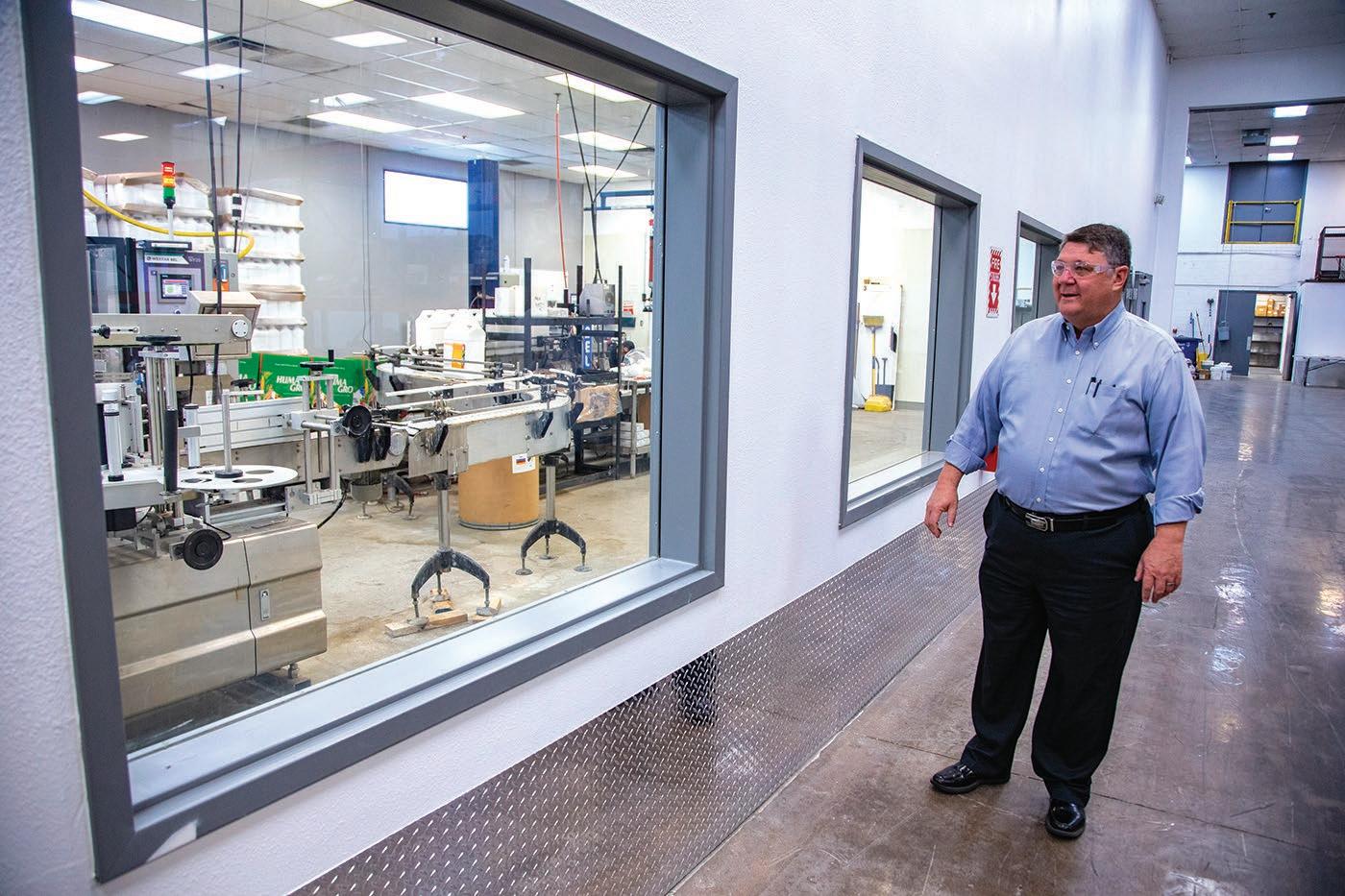
The secret behind Huma’s products is a proprietary blend called Micro Carbon Technology or MCT, which are concentrated tiny organic particles extracted from the humates in the Idaho mine.
Huma products with MCT allow nutrients to be delivered with extreme precision, improving a crop’s vigor, quality and yield, according to the company.
“There is no one who has the Micro Carbon Technology,” said Smith, who took over the company’s helm in November 1994. “That was developed by my dad and the founders of the company.”
Smith isn’t a scientist. The Mesa resident earned an undergraduate degree in finance and a law degree, though he says he knows more about agriculture than the law.
Continuing in that research began by the company founders is a team of scientists.
“We try to find the best humic researchers in the world and hire them,” Smith said. “That’s what we are doing because we want to know everything about humic. So we have the best.”
The senior director of research is Dr. Richard Lamar, who oversees a team of four other employees with doctorates. During a company tour, he extolled the benefits of humic substances, such as in
makes you stronger in the future.”
The company’s Idaho mine won’t run out of its key ingredient anytime soon. “In terms of the material from Idaho it’s a whole mountain and we don’t harvest very much,” Smith said. “It’s been years since we mined it.”
In fact, a pile of ordinary-looking dirt brought over from the Chandler location during the 1978 move has at least 20 years’ worth of supply of humates, according to Smith.
The company also mines humic material from a mountain in New Mexico, where it is under contract for the reserves for over 20 years. The raw material there is regularly mined and sold to manufacturers for the productions of their own humic-based products, Smith said.
enhancing the fine roots in plants.
“If you enhance the fine roots the plant is effectively able to exploit an increase volume of soil,” Lamar explained. “If you've got two roots you can only exploit so much. If you've got 10 roots you can exploit more right?
“So that’s a big thing and we are also finding that our products are enhancing photosynthetic efficiency. So we got an increased efficiency in the roots and increased ability to capture Co2 and fix it into carbon so we have more plant biomass and hopefully that relates to increases in productivity because that’s the bottom line.”
He said that farmers applying Huma products to their crops want to see that return in their investment, such as increased bushels of corn per acre.
Humic also helps with stress response in plants, according to Lamar.
“With global warming there’s a lot more stress on plants on agricultural crops these days,” he noted. “We stress them just a little bit to make them stronger.”
According to Lamar, triggering a modified stress response in plants primes them to handle stress down the road brought on by conditions such as a drought or too much rain.
“I like to tease that it’s like going to the gym and exercising,” Smith interjected. “You break down your muscles and that
According to Smith. crops grown with Huma products save water.
“Approximately it’s 30% on the average saving on water, which is huge with Arizona ag,” he said.
Increased crop yields of between 10 and 20% also can be seen but more importantly quality is where the Huma products really shine, Smith said.
“We can enhance the shelf stability of that crop,” he said. “We’ve shown that peppers for example grown on our product can last a whole nother week on the shelf in the store and in the fridge for the consumer.
“We’ve shown that that same pepper has more magnesium, more nutrients in it than a conventional grown pepper. That makes it fun for us.”
And, “you can definitely taste the difference,” Smith said.
“It tastes sweeter. It increases what you call the Brix, a term for sugar measurement that you can do that we do all the time to demonstrate our products are working.”
Five years after the company set up in Mesa, it moved to Chandler in 1978. In 2011, it relocated to Gilbert to much larger digs on 4.5 acres, allowing for expansion.
Huma’s current roster includes 55 in Arizona, 25 in New Mexico, 14 in Mexico
see PIONEER page 25
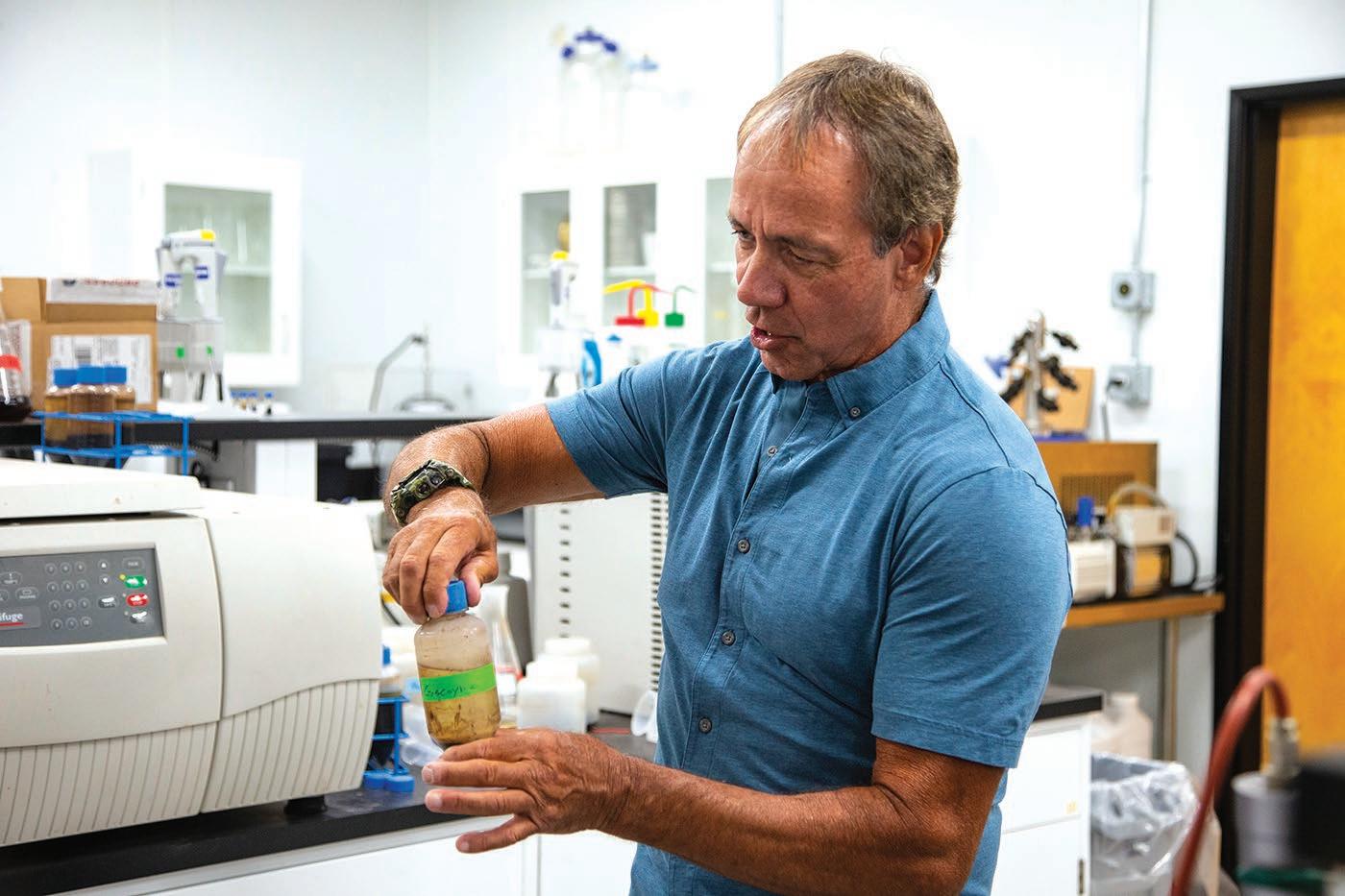

and six in Brazil.
The company in June celebrated its 50th anniversary and announced a name change to Huma from Bio Huma Netics. It also consolidated its six brands under the Huma brand name and unveiled a new tagline, “Humic Solutions with a Human Touch.”
But despite its patented technology, the company is still a small player in the $130-billion fertilizer industry, according to Smith, who added that Huma needed to do a better job telling its story.
He said that for several years the company was selling its products more outside the United States and now sales are divided almost evenly between domestic and foreign markets.
But he said he’s having a tough sell with Arizona farmers, who see Huma’s products as “snake oil.” Instead, they are sticking with the conventional fertilizers.
Arizona is the fourth largest vegetable grower in the country and Yuma County is one of the largest producers of winter vegetables.
“The reality is we are real,” Smith said. “We’ve been around for 50 years, so you’d think they’d wake up to, ‘oh, there must be something to that.’”
The Nebraska farmer Hilger said when he first applied Huma’s biostimulant product on his corn, he thought, “Gee whiz, that really seem like it made better corn that year.”
Hilger also visited with a number of
farmers in Washington, Oregon and Idaho who were using Huma products and the common theme was that “their plants were so much healthier and more insect resistant and they didn’t need as many of the chemicals” that he had been using.
Smith said that combining MCT with the nutrients make them “so much more efficient.”
“So, we are seeing up to 10 times more efficient and our least efficient product is a nitrogen and that is only two times more efficient,” Smith said. “But everyone in agriculture is talking about a 25%-efficiency ratio and we’re talking about a 100% efficiency ratio so that’s more efficient than conventional fertilizer.”
The product that the company sells the most is the competitor to NPK fertilizers –nitrogen, phosphorus and potassium.
“Our typical application is somewhere between a quart and a gallon per acre,” Smith said. “So, a very small amount –compared with conventional fertilizer that takes a ton of fertilizer per acre.”
The product is diluted with water and dispersed through a ground sprayer or drip irrigation and in many parts of the world through aerial application using a plane.
“The price is about the same with conventional as an exchange,” Smith said. “Now we are going to apply a whole lot less but in terms of cost per acre it’s about the same.”




House Speaker Ben Toma has formed a special panel designed, at least in part, to investigate the activities of Katie Hobbs before she was governor.
On paper, the three-member panel is charged with examining “government censorship and conduct of state executive officials.’’
But the announcement comes less than 24 hours after a new report on the internet that Hobbs used her position as secretary of state in 2020 to get Twitter -– now X – to take down new responses critical of her 2017 post comparing supporters of Donald Trump to Nazis.
Toma, a Peoria Republican, tapped first-term state Rep. Alexander Kolodin, R-Scottsdale to chair it. And Kolodin told Capitol Media Services called the timing “an interesting coincidence.’’
“We had been planning this stuff for months,’’ he said. “Obviously, it’s something that elected officials are tempted to engage in, regardless of whether they’re Democrats or Republicans.
“So it’s something that we want to make sure that we have the information that we need to really craft intelligent legislation that aims to protect the First Amendment

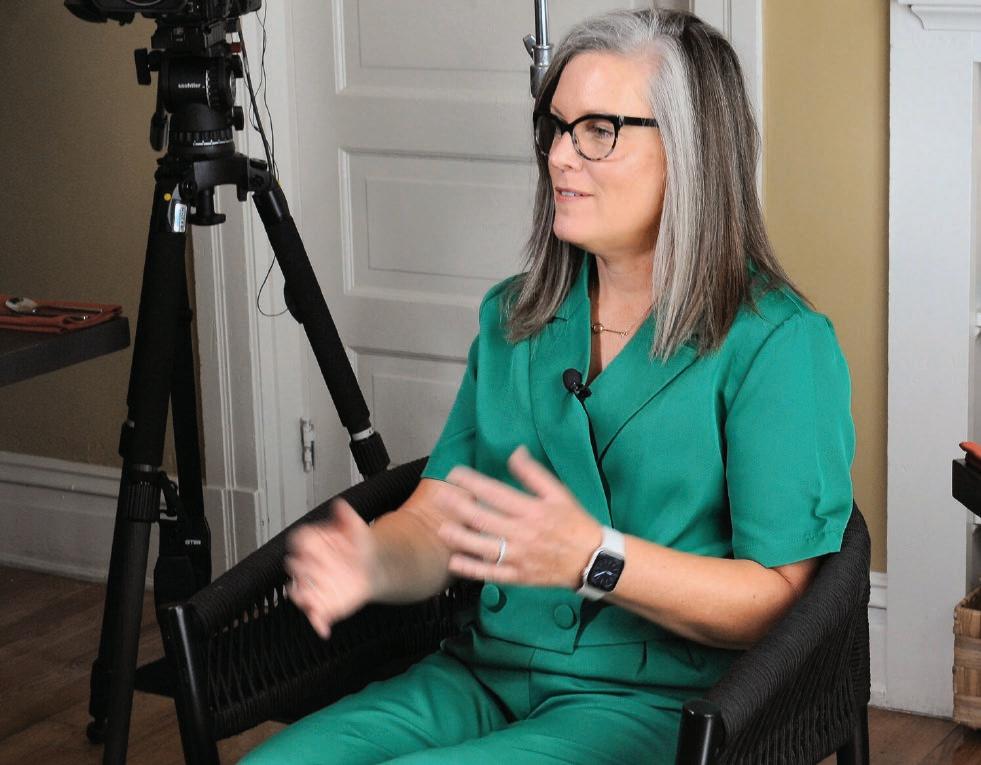
rights of Arizonans in the digital age.”
Kolodin acknowledged that the report of Hobbs’ activities may have helped spur Toma to agree to form the panel.
The report comes from Arizona Capitol Oversight, which announced its formation last month with the goal of obtaining public records of government offices throughout the state. Brian Anderson lists himself as founder, citing his background as previously handling press and research for former Gov. Doug Ducey.
His first posting revolves around a post that Hobbs made in August 2017, while a member of the Senate, that Trump “has made it abundantly clear he’s more interested in pandering to his neo-nazi base than being POTUS for all Americans.’’
What made all that relevant was Arizona Capitol Oversight finding a November 2020 message from Hobbs, sent from her official secretary of state account, asking Twitter to take action.
When Twitter asked for more information, Anderson reports that Hobbs wrote back from her official account that “the altright got a hold of a 3-year-old tweet on my account and have been sending harassing, abusive, and threatening tweets and direct messages for the last 2 days.’’
Hobbs told Capitol Media Services on Friday she did nothing wrong.
That wasn’t the governor’s first interaction with the social media giant.
Capitol Media Services previously reported that employees in the Secretary of State’s Office also asked Twitter in 2021 to remove two posts having to do with allegations that the office had contracted with a private firm to set up a new voter database, a firm that the person making one of the posts claimed had a foreign contractor.
“These messages falsely assert that the voter registration system is owned and therefore operated by foreign actors,’’ Hobbs press aide Murphy Hebert wrote to the Center for Internet Security, an organization that is a clearinghouse that elected officials across the country use to combat what they believe is misinformation.
“This is an attempt to further undermine confidence in the election institution in Arizona.’’
“I, like any other person who is harassed on Twitter, reported that harassment through the proper channels and asked for them to follow their guidelines in terms of harassment,’’ she said. “As you remember, I was having death threats, I was having armed protesters outside my house.’’
But Hobbs also was unapologetic about the original 2017 posting.
“I never tried to take down that tweet,’’ she said. “I stand by that tweet. And that is not the issue.’’
The context, Hobbs said, was in the wake of comments by Trump following a violent white nationalist rally in Charlottesville, Virginia, that resulted in the death of one woman.
At one point Trump, asked about the events, said “there were very fine people on both sides,’’ though it also appears the former president condemned actions by Neo-nazis.
Hobbs said her posting was because “the president wouldn’t condemn the people that were responsible for her death.’’
The governor also derided the decision by Toma to form a special panel.
“I’m glad we’ve solved water, the housing crisis, and fixed public education and have time for this sideshow,’’ she said.
Kelly Ward, then chair of the Arizona Republican Party, called that improper in a complaint to then-Attorney General Mark Brnovich, who apparently never acted on it.
Anderson said he found evidence that Hebert, using her account at the Secretary of State’s Office – and with a copy to Hobbs – unsuccessfully attempted to get Facebook to remove a post claiming that Kamala Harris was ineligible to serve as vice president.
Kolodin told Capitol Media Services the special panel is about more than Hobbs’ activities.
“There has never been a really comprehensive legislative investigation into the way we are protecting or failing to protect the First Amendment in this new age of machine learning and neural networks and algorithms that decide what people are served online,’’ he said. “It’s something that we want to make sure that we have the information that we need to craft intelligent legislation that aims to protect the First Amendment rights of Arizonans in the digital age.’’
Yet the committee is charged only with investigating the activities of those in the executive branch.
“I don’t think there’s ever been any reports that the Legislature has been trying to decide or curate or censor online speech,’’ Kolodin responded, offering to
see HOBBS page 27
Homebuyers are facing an increasingly bleaker market in the Phoenix metro region but they shouldn’t expect a market crash that will bring down prices and boost the number of available homes, the leading analyst of the Valley’s housing market warns.
The Cromford Report in recent weeks has been hardly upbeat in its daily and monthly reports on price and inventory trends, warning earlier this month:
“Some badly informed observers still think there is a bubble popping situation ahead, but they completely misunderstand the situation. For prices to fall, we have to have an excess supply compared to demand.
“Even though demand is very weak, supply actually got 2.6% smaller over the last month. There is very low delinquency in residential real estate lending right now, so it takes a ridiculous leap of great imagination to believe that foreclosures










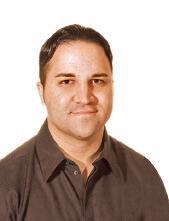






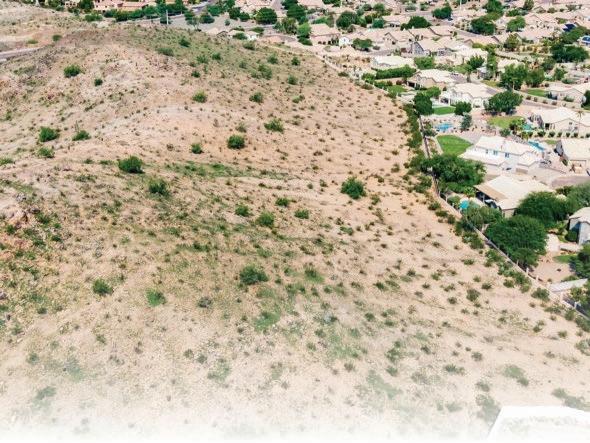


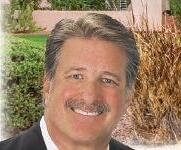







are going to have any significant effect on supply in the foreseeable future.”
The Cromford Report’s observations were underscored last week when demographer Rick Brammer included some remarks in his presentation to the Chandler Unified School District Governing Board on enrollment trends in that district, the second largest in the state.
Brammer essentially echoed the same findings he provided in reports to the Kyrene and Tempe Union governing boards earlier this year, telling all three not to expect any increase in families with school-age children because they are effectively shut out of the housing market in Ahwatukee and Chandler.
“The level of turnover in this district is very, very low, as is the … availability of affordable housing,” Brammer told the CUSD Board. “So those are going to continue to work against us.”
The Cromford Report said on Aug. 3 that the re-sale market “is plodding along slowly with poor demand and weak supply.
“There is little to get excited about unless you are in the new home construction business. At the time of writing the typical 30 year fixed mortgage rate is up to 7.20%, so affording to buy a home just got a little harder. Selling an existing home with a mortgage looks even less attractive, so new MLS listings are arriving in very low numbers, as they have done all year.”
The Cromford Report last week also offered some news that may temper fears in Phoenix that the city administration’s proposed Zoning Code changes allowing single-family-homeowners to build smaller deteached houses in

This 7,217-square-foot home on. S. Montezuma Court, Ahwatukee, recently sold for $1.7 million. Built in 1988, the six-bedroom,
average is going up because those with a higher rent are staying active longer, not because rents are increasing.”
The Cromford Report also offered little hope for any quick turnaround in inventory, which has been trending downward at an alarming pace.
“So far in the third quarter of 2023 we have seen 7,447 new listings,” it reported. “The equivalent number last year was 12,439 and in 2021, it was 11,712. We are down 40% from last year and down 36% from 2021.

their backyard would fuel an increase in short-term rentals.
The Cromford Report said that parts of the market are saturated with short-term rentals.
“So many owners joined the Airbnb party that there are sometimes far more short-term rental properties than there are people wanting to rent them,” it said, noting:.
“This means lower occupancy and price competition, making ownership of a short-term rental much less attractive than it was a couple of years ago. Over the last two years average occupancy is reported to have dropped from 60% to 56%. This is a negative trend but hardly of catastrophic proportions.”
The short-term rental market has softened enough that “some owners are considering converting to long-term rentals instead,” it said, explaining “the theoretical advantages are higher occupancy and greater peace of mind but the main disadvantage is a relatively low gross income compared with the owner’s original expectations.”
Yet, it said that the monthly rent for
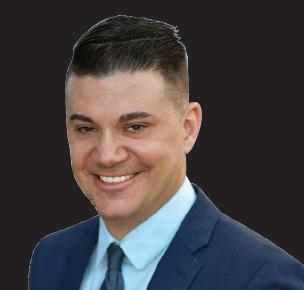

those places converted to long-term rentals is so high in some areas that “potential tenants for these is limited.”
“There is currently no great shortage of potential tenants at the affordable end below $2,000 a month,” it added. “However, if people can afford a rent over $4000 a month, then they are usually of a mind to buy a home.”
“Settled families with children in school are unlikely to want a high-price rental unless they are in a secure highpaying job,” The Cromford Report said. “And in those circumstances, a mortgage should be easy to obtain.
“As a result we have already seen weakness in the rental rate per square foot for homes over $2,500 per month in Scottsdale. …We currently have 49.8% more active rental listings than we did 12 months ago. About 800 of them are in Scottsdale and their average asking rent is $4,380.
“This time last year there were only 517 with an average rent of $4,290. The
“This annual drop in new supply is unprecedented and is having a far bigger impact on the market than the affordability issues caused by the high interest rates.”
As dismal as the residential market has been for re-sale homes, the office market is far worse, the Cromford Report added, calling it “severely challenged by declining demand.”
“The supply of office space exceeds supply by a clear margin and so asset values are dropping,” it said, calling the trend “a worldwide phenomenon” that is especially prominent in older buildings and those with “less-than-ideal locations.”
“The market conditions mean lenders are becoming increasingly reluctant to take them as security for loans and owners with the need to refinance in the next two years are going to have a hard time.”
These conditions are prompting some cities in the nation and developers to consider converting office skyscrapers into apartment buildings, though there has yet to be significant movement in that direction.

 BY BONNY HOLLAND AFN Guest Writer
BY BONNY HOLLAND AFN Guest Writer
My Real Estate Group Leading Luxury Experts have been selling Luxury Homes in Ahwatukee since 1995. In some areas, homes with a value over $1 million are considered Luxury.
Luxury home prices vary depending on the location, but the general rule is the top 10% highest sales in an area. In my 28 years of selling custom lots and luxury homes, there have been many cycles of ups and downs with pricing and the number of homes sold in a year.
We had years like 2017 when only nine homes over a million sold in all three zip codes in Ahwatukee, and then a recordbreaking year in 2021 when 81 homes sold over $1 million.
Throughout the cycles, many things have remained constant in Ahwatukee. Ahwatukee’s luxury real estate market
offers a distinctive blend of upscale living, natural beauty, and a thriving community. Here’s an overview of the luxury real estate market in Ahwatukee:
Exclusive properties: Ahwatukee boasts a selection of exclusive luxury properties that cater to many buyers. These homes often feature premium amenities, high-end finishes, and meticulous attention to detail.
From spacious custom-built contemporary estates to elegant Mediterranean-style villas, the luxury market in Ahwatukee offers a range of architectural styles to suit diverse tastes.
Stunning desert surroundings: Ahwatukee’s luxury properties often take advantage of the area’s breathtaking natural beauty. Many homes are nestled in the picturesque Sonoran Desert, offering panoramic mountain views, serene desert landscapes, and a sense of tranquility.
This unique setting creates an idyllic backdrop for luxury living and allows
residents to enjoy outdoor activities and recreation right at their doorstep.
Amenities and lifestyle: Living in Ahwatukee goes beyond the home itself. Residents have access to a range of highquality amenities and services that enhance their lifestyle. Such as incredible mountain views, lakefront homes, and golf course communities.
Additionally, Ahwatukee offers excellent schools, recreational facilities, and easy access to outdoor activities like hiking, and biking.
Proximity to urban centers: Despite its tranquil setting, Ahwatukee provides convenient access to major employment centers and urban amenities.
Located just south of Phoenix, residents can enjoy a peaceful suburban lifestyle while still being within a short drive of the city’s business districts, cultural attractions, great restaurants, and shopping.
This makes Ahwatukee an appealing option for luxury homebuyers who de-
sire a balance between privacy and urban convenience.
Strong real estate market: Ahwatukee’s luxury real estate market has remained resilient. With a steady demand for upscale properties.
The area’s desirability, limited inventory, and exclusivity contribute to a stable market. Luxury homes in Ahwatukee often hold their value well and offer a potential for long-term appreciation.
If you’re considering buying or selling luxury real estate in Ahwatukee, it’s advisable to work with a knowledgeable local real estate agent who specializes in the luxury market.
Leading Luxury Experts, the top Luxury Real Estate brand in Ahwatukee, can provide tailored insights, guide you through the process, and help you make informed decisions to achieve your luxury real estate goals.
Bonny Holland can be reached at Bonny@LeadingLuxuryExperts.com or 602-369-1085.








The number of eviction cases in Maricopa County Justice Courts continued to trend upward last month with the court covering Ahwatukee among the top four for July and the highest total so far this year.
“We had 7,142 eviction cases filed in July 2023, once again higher than they’ve been since 2008,” said Justice Courts spokesman Scott Davis.
Kyrene Justice Court, which also covers Tempe, had the fourth highest total of eviction cases last month with 431 but its 2,857 cases for the first seven months of 2023 was the highest among the county’s 26 justice courts.
In July, however, the courts with the highest monthly totals were Moon Valley, Manistee and Maryvale, respectively.
Moon Valley, which covers North Phoenix, led the pack for July with 479 cases, according to court data.
Manistee, which covers Glendale and Peoria, tied with the West Phoenix Maryvale court in July with 431 eviction cases.
Davis also reported that the county-wide average judgment “went a tiny bit higher for July than June to $3,179.24.
“By comparison, pre-pandemic (2019) it was $1,976.81 and in 2000 – the first year for which we have reliable stats – $953.17,” he added, noting the data is not adjusted for either inflation or population growth.
Davis stressed that not all eviction cases filed result in the loss of housing.
“As many as a third will be dismissed and sealed when the tenant pays and stays or the landlord otherwise does not pursue court resolution,” he said.
While the data did not indicate the reasons for the eviction filings – they can vary –they appear to be another indication of the national crisis in housing affordability.
One aspect of that crisis is the cost of rentals and Arizona renters may find a smidgen of hope in Gov. Katie Hobbs’ approval of legislation abolishing the rent tax charged by Phoenix and 74 other cities and towns in the state.
But renters will have to wait until at least 2025 to see if the tax’s elimination will bring relief, which is costing those municipalities that impose the tax a combined $280 million a year in revenue. Phoenix will lose $70 million.
Senate Majority Leader Mitzi Epstein, D-Tempe, said even if landlords no longer charge the tax, they will simply raise their rates knowing that’s what tenants are will-
ing to pay.
The measure still has the same language as the version Hobbs vetoed about landlords being required to pass along the tax savings to tenants.
But it also includes a provision that says if there’s a civil suit, the burden is on the landlord to show that none of the rent includes the levy once it disappears.
Hobbs press secretary, Christian Slater, said the effective date of the legislation was pushed to 2025 partly to see if the measure can be tweaked to ensure that there really are savings passed on to tenants.
While the Arizona League of Cities and Towns wants the state to bail out municipalities that are losing millions in revenue, Republican leaders in both chambers of
see EVICT page RE5



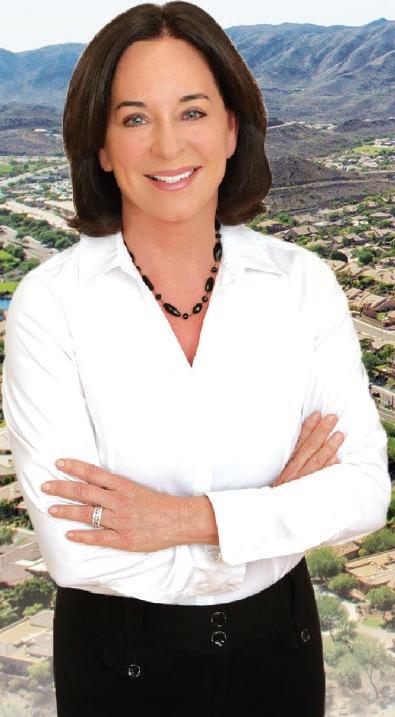










 BY MICHELLE AZZATA AFN Guest Writer
BY MICHELLE AZZATA AFN Guest Writer
Hopeful homebuyers in Phoenix are feeling the whiplash of the last three years – from historically low mortgage rates to rapidly rising rates and from bidding wars to diminished inventory.
These are three broader trends Phoenix buyers can anticipate for the remainder of the year:
Limited to shrinking housing supply. There are fewer homes for sale now than this time last year, but a thin silver lining is the fact that there’s been a half percentage point drop in median sales price but the market remains challenging for buyers.
Additionally, Bank of America’s latest Homebuyer Insights Report found that 70% of homeowners ages 45 to 76 plan to or have retired in the home they already own.
National active home listings saw a 53% decrease between July 2016 and December 2022 since Realtor.com began tracking this data.
A steady mid-year. In the past six months, mortgage interest rates have floated between the 6 to 7% percent range, slightly down from the end of 2022., but the biggest mistake that potential homebuyers can make is waiting and trying to time the market.
Buyers hold more decision-making power. Buyers will have more time to think and negotiate – making the shopping experience more manageable.
The challenges and opportunities that the homebuying environment presents still require careful planning for those looking to buy.
Whether you become a first-time homeowner or purchasing your second home, here are a few strategies to get you started:
Take advantage of digital tools. Online resources can guide you through the mortgage
process from start to finish and prevent any delays in the process, whether it’s checking the status of your loan or submitting required documentation electronically.
They’ll even provide you with a to-do list of outstanding tasks and status and details of a loan application.
Show sellers you can meet financial obligations. Whether you’re getting additional down payment assistance or earn a larger income, putting down a larger down payment could lower your mortgage rate. Anytime you can showcase to the seller that you’re in a good financial position, you should do so.
Pay discount points on your mortgage. Mortgage points, also known as discount points, are fees you pay your lender at closing for a reduced interest rate on your loan.
While this might not be the right strategy for
see TRENDS page RE7





the Legislature said they are not inclined to provide relief.
House Speaker Ben Toma said, ““Governments always want to be held harmless from various economic impacts, including inflation.”
But he said the governments rarely recognize the impact of inflation on taxpayers, including in rising rents.
And the Peoria Republican, whose home city collects about $125 million a year in rental taxes, said cities already have benefited from other policies that have brought in more state revenues overall.

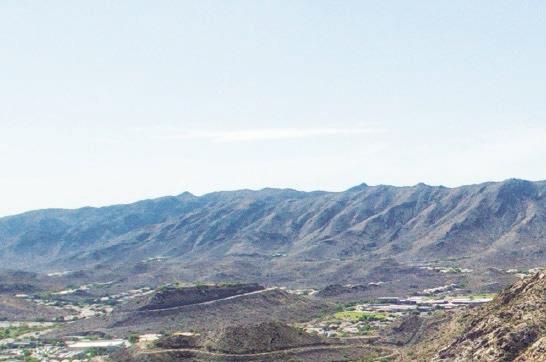

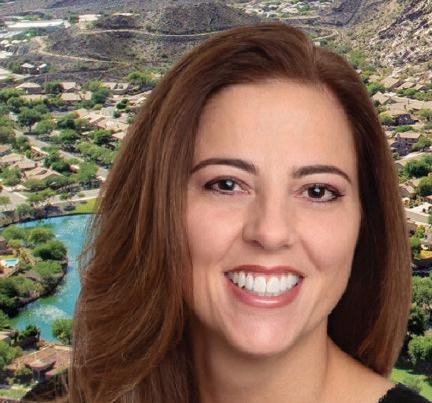










LOCATED IN FOOTHILLS MOUNTAIN RANCH ESTATES!! OVER 5 ACRE HILLSIDE LOT WITH STUNNING MOUNTAIN VIEWS FROM EVERY DIRECTION*BUILD YOUR DREAM CUSTOM ESTATE OR BUILD MULTIPLE HOMES ON THIS SIGHT*ZONED R3*THE POSSIBILITIES ARE ENDLESS ON THIS RARE OPPORTUNITY*THERE IS NOT ANOTHER PIECE OF LAND IN AHWATUKEE THAT OFFERS THIS MANY BUILDABLE ACRES*NO HOA*LOCATED AT THE END OF A CUL-DE-SAC*BE THE KING OF THE HILL WITH VIEWS ALL THE WAY TO FOUR PEAKS*PLANS AVAILABLE AND OTHER CUSTOM HOME OPTIONS AVAILABLE FROM A WELL KNOW AHWATUKEE CUSTOM HOME BUILDER*DO NOT MISS THIS AMAZING HILLSIDE LOT IN AN AMAZING LOCATION!!!!
5 Acre Lot /Listed for $599,000







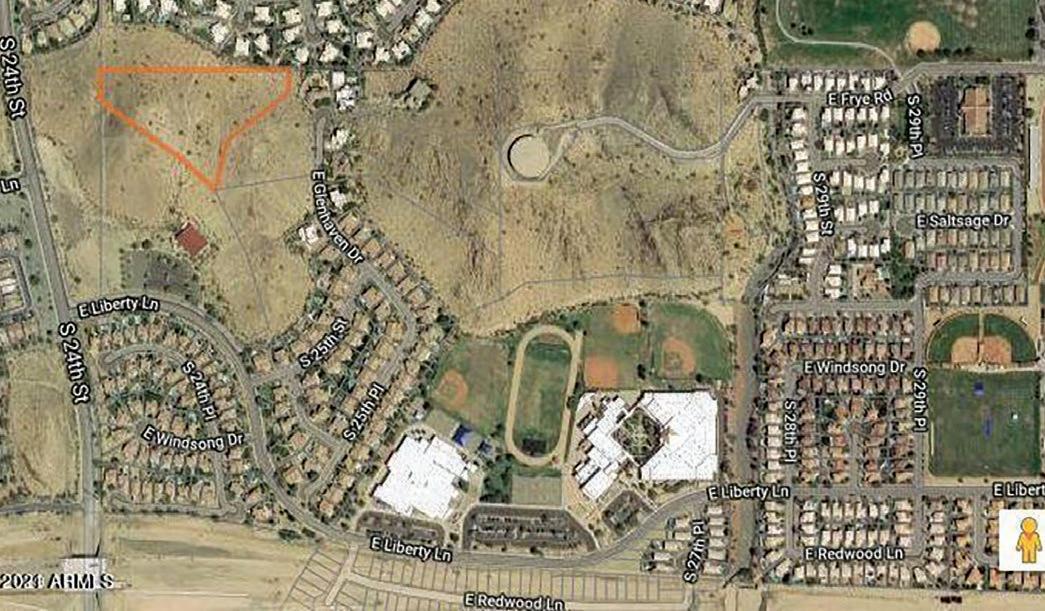



www.GenoRoss.com







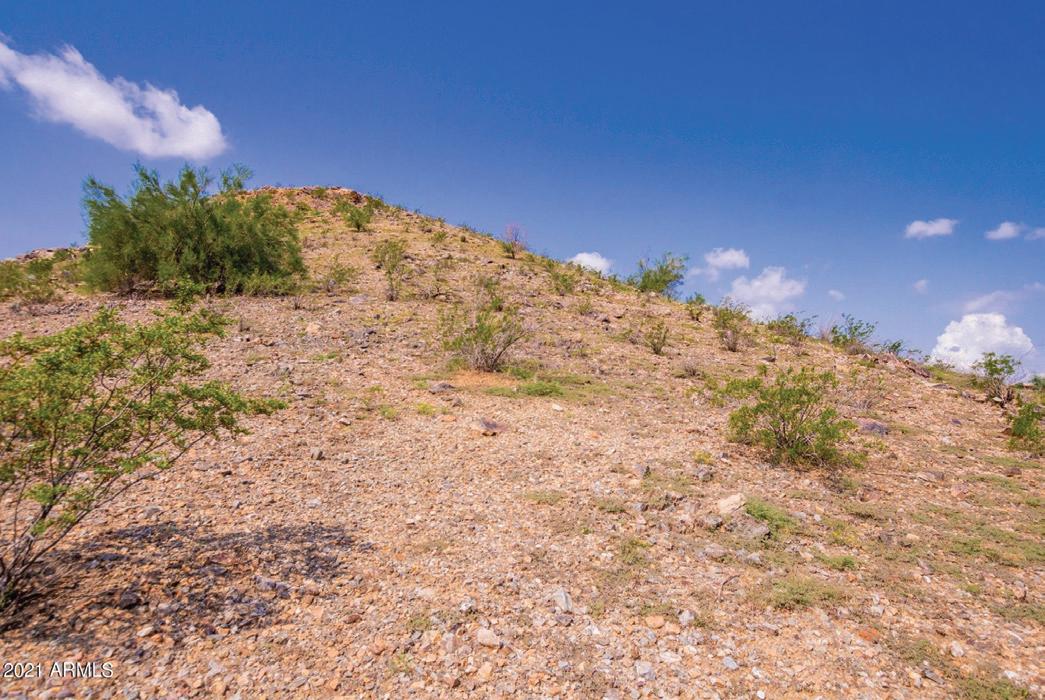



Superb single level with detached casita in highly coveted Ahwatukee cus- tom estates. Open kitchen features granite countertops, raised-panel cabinetry, stainless steel appliances, island with Jenn-Air glass cooktop, breakfast bar, pantry and desk. Inviting family room with recessed lighting, surround sound and wet bar. Master suite features an office, separate den, walk-in closet, lami- nate and travertine flooring, granite countertops, jetted tub and walk-in shower. Two bedrooms share a jack and jill bath. Upgrades throughout include shutters, travertine, laminate flooring in all bedrooms plus granite counters in all baths. Laundry room with sink and cabinetry. Backyard oa- sis features Pebble Tec pool and spa, ramada, stainless steel BBQ/smoker, grass area, grapefruit tree, lighting and great views.
Listed for $1,225,000
The West and SouthEast REALTORS of the Valley (WeSERV) has partnered with Arizona State University to provide a scholarship fund in memory of Matt Ortega, a Phoenix Realtor and Valley government leader who died in 2021.
And to continue funding for the scholarship, WeSERV is holding a Matt Ortega Memorial Golf Tournament at 7 a.m. Sept. 26 at Dobson Ranch Gold Course, 2155 S. Dobson Road, Mesa.
Registration is $400 for a foursome and $100 for an individual, though the price rises after Sept. 12. The registration fee includes lunch, prizes and other green fees, cart and range balls. Register at weserv.realtor/calendar.
The $25,000 Matt Ortega Memorial Scholarship is for Native Americans attending ASU’s School of Public Affairs and as undergraduate and graduate students and who show “an affinity for public affairs, local government management or real estate,” WeSERV said in a release.
“Matt, a proud alum at ASU, served as the student body president and was the homecoming king during his senior year in 1990. He had a deep passion for public service, where he served as the director of government relations for the Maricopa Community College System, associate director for the Valley Metro Regional Public Transportation Authority, and the director of intergovernmental relations for the Town of Gilbert.”
Ortega joined WeSERV, formerly known
TRENDS from page RE5
everyone, paying discount points on your mortgage could offer potential savings over the course of the loan. In general, the longer you plan to own the home, the more you’ll save using points. Also determine whether you have the cash available to buy points up front.
Research assistance in upfront costs
Many homebuyers might still be struggling with saving for the down payment and closing costs. Recognizing cash reserves are often the biggest barrier to homeownership, Bank of America offers up to $17,500 in down payment and closing cost assistance when used together – no repay-
as the SouthEast REALTORS of the Valley, in 2015 and served as the vice president of government affairs.
“During his time at the association, Matt was a beloved staff member revered by his colleagues and WeSERV volunteers. His infectious charm, charisma, and energy were felt throughout the association’s hallways and with each member, he came across,” WeSERV said.
“His wisdom for government affairs and countless stories dealing with life’s hurdles were some of his best qualities.”
Roger Nelson, WeSERV CEO, added, “The passing of a colleague is never easy to handle, especially someone like Matt. His door was always open to staff members and volunteers whenever they needed guidance or a good laugh.
“Although Matt is no longer here in physical form, the association hopes the scholarship fund will keep his legacy alive.”
WeSERV, established in 1946, is a member-driven nonprofit trade association with over 26,000 Realtors and affiliates throughout Cochise, Maricopa, Pinal, and Santa Cruz counties.
Association volunteers and the Member Services Team work “to deliver resources, services, and education with a vision to be One Premier Association and the mission to provide services that lead to member prosperity.”
WeSERV also advocates for members and works to protect the real estate industry.
Information: weserv.realtor.
ment necessary.
Additionally, the Bank of America Down Payment Center helps homebuyers find state and local down payment and closing cost assistance programs in their area and the Bank of America Real Estate Center identifies down payment and closing cost grant-eligible properties for sale across the country.
Take your time. Take time to improve your credit score, research lender options, and understand what you can comfortably afford before jumping in.
Michelle Azzata is a Bank of America vice president and preferred lending market leader. Contact her at 775-430-3804.





602-430-3917











4 BR / 2.5 BA / 2,283 SQFT
Enjoy the privacy of this premium hillside view lot. Just completed new carpet and interior paint.
Listed For $497,500
5 BR / 3 BA / 2,736 SQ FT
Spacious former UDC model home with South Mountain views. Private backyard with large pool.
Listed for $625,000
5 BR / 3.5 BA / 5,079 SQFT
Impressive custom with mountain views. Abundant amenities including professional sport court in private backyard.
Listed for $1,325,000
3 BR / 2 BA / 1,500 SQFT
Great remodel with superb updates in kitchen and baths. 2017/2018 roof. 2017 exterior paint. 2016 HVAC.
Listed for $489,500
5 BR / 3 BA / 3,394 SQFT
Complete remodel. New roof, two AC units, flooring, kitchen, baths, plumbing and more.
Listed for $799,000
5 BR / 4.5 BA / 4,391 SQFT
Superb single level with detached casita. Shutters, travertine and laminate flooring. New roof in 2022.
Listed for $1,225,000





NEW*GRAND FOYER*LIVING ROOM W/ FIREPLACE*FORMAL DINING ROOM*FAMILY ROOM W/FIREPLACE & FULL WETBAR*KITCHEN INCLUDES CUSTOM CABINETRY,RARE QUARTZSITE COUNTERS,THERMADOR APPLIANCES,BUILTIN FRIDGE/FREEZER,ISLAND,& WALK-IN PANTRY*LARGE MASTER SUITE*MASTER BATH W/ STEAM SHOWER,JACUZZI TUB,HIS/HER VANITIES, & WALK-IN CLOSET*MEDIA ROOM*EXERCISE ROOM*GAMEROOM*GIGANTIC PARADISE BACKYARD INCLUDES:PEBBLESHEEN POOL & JACUZZI,TWO GRASS AREAS,SPORT COURT, AND STUNNING SOUTH MOUNTAIN VIEWS*BACKS & SIDES TO WASH WITH COMPLETE PRIVACY*A 6-CAR GARAGE



Ahwatukee Custom Estates
$1,750,000


Foothills $499,000
Amazing Remodeled Custom Estate with mountain views located at the end of a cul-de-sac.Over 8000sqft of pure luxury finishes.6
Bedroom,5.5 Baths.Custom
Kitchen.Elevator.Executive Office.Basement Media
Room.Dance Studio.Huge
Backyard with Pool, Jacuzzi, Turf, BBQ, Sportcourt.This Spectacular Estate has it all!!! SOLD!
$395,000




per month includes front yard maintenance. Newly renovated, new skylight, new paint, texture, trim, baseboard, new backyard and atrium landscaping, new kitchen appliances & sink, Newer A/C, Wood fireplace, private back yard, end unit on corner. Close to golf course, freeway, farmer’s market every weekend, many bars & restaurants, and grocery stores. Also, a part of Ahwatukee community parks w/master HOA.
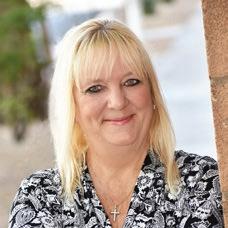
Jenifer Bulfer
480-297-6968
jbulfer@westusa.com




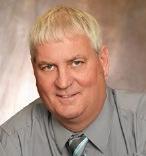
480-435-3461
troyston61@gmail.com



One of the most amazing lots available in ahwatukee!! Located in foothills mountain ranch estates!! Over 5 acre hillside lot with stunning mountain views from every direction*build your dream custom estate or build multiple homes on this sight*zoned r3*the possibilities are endless on this rare opportunity*there is not another piece of land in ahwatukee that offers this many buildable acres*no hoa*located at the end of a cul-de-sac*be the king of the hill with views all the way to four peaks*plans available and other custom home options available from a well know ahwatukee custom home builder*do not miss this amazing hillside lot in an amazing location!!!!











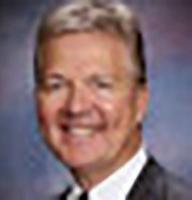
Mike




Make












New custom home. 3, 324 sq. ft. 5 bed 4 bath. From the moment you arrive and enter the oversized custom front door you will be greeted with a large inviting great room that is designed for family and friend gatherings. The great room seamlessly flows into the luxurious chef’s kitchen, creating the perfect space for entertaining. Beautiful appointed finishes throughout. This home sits on 1.25 acers (irrigated) plenty of room to make your very own Oasis! NO HOA! Horses, RV’s and assorted toys are welcomed. Private well, water softener and much, much more.
Carlos Martinez
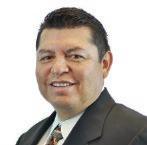
480-751-8866
teammartinez11@gmail.com

Morrison Ranch Gilbert



This 1,976 sq ft, 3 bed 3 bath is nestled on a corner lot displaying a great curb appeal highlighted by a cozy front porch, & a grassy front yard. Interior boasts a formal living room, plantation shutters, archways, tons of natural light, and carpet & wood-look tile flooring t/out. The family/dining room opens to the kitchen, featuring a fireplace, surround sound, & sliding doors to the back! Gourmet kitchen offers quartz counters, recessed & pendant lighting, staggered cabinetry, mosaic backsplash, island w/breakfast bar, and SS appliances w/cooktop gas. Main bedroom has backyard access and an ensuite w/dual vanities and spa shower. Enjoy the entertainer’s backyard with a covered patio, travertine pavers, & a sparkling pool!

Kelly Predaza
480-238-4035
Kpedraza123@aol.com
Almost a year ago, Huma purchased a 40,000-square-foot building, south of the Arizona State University campus in Tempe.
“We’re right on the railroad so we will have rail lines,” said Smith, who added that the company has been waiting six months so far for the city to sign off on its hazardous material authorization in order to occupy the building.
“Our intention is to slowly transfer over our blending and packaging to that facility from here,” he said.
The majority of the company’s packaging is done in 2.5-gallon jugs. Liquid product sent overseas are contained in 1,000-liter totes for packaging at their destinations.
The Gilbert site will be the base for product development and improvement, product quality assurance and humic research.
The company’s goal is to be the global leader in humic products and technologies, according to Smith.
“We want to provide solutions to agriculture as we know it today,” he said; “the challenges that face agriculture today. And those are over-applying chemicals, using salt-based fertilizers, and just
HOBBS from page 26
add that to the panel’s task if someone presents such information.
But even before any hearings, the Scottsdale Republican is questioning Hobbs’ claim that she had a right to file a complaint with Twitter about the 2020 postings.
“There comes a point where it crosses the line into state action,’’ Kolodin said. “And part of what this committee is going to investigate is where is that point.’’
Still, Kolodin said, he does not think it’s proper for statewide officials, using their official accounts and their taxpayer funded staff, to make such requests.
“That, to me, crosses the line from, ‘I’m a person who is aggrieved personally’ to now ‘I’m asking you to do this on behalf of the state’ which, of course, always carries with it, implied carrots and sticks,’’ he said.
“Elected officials, especially statewide officials, very powerful people,’’ Kolodin continued. “They can make life nice or
not being environmentally friendly.
“When we combined our technology with other nutrients, we make them more available so our environmental impact is much less. It’s really a sustainable, regenerative ag.”
Smith said that Huma is a heavy player in the biostimulant movement in the United States and in Europe that’s been going on for the last couple of years.
“There’s been a shift in agriculture where farmers are striving to be more environmentally conscious,” Smith said. “They know that some of the stuff they’ve been applying is not good, particularly as the older generation is dying out.
“They’re dying from lung problem or other problems associated with the chemicals they’ve been applying for all those years. We think that this movement will have a great opportunity for the future, making things better.”
Smith is big on sustainability.
The company even purchased a label printer to cut down on waste and it recycles all its junk like cardboard and unused plastics.
“I pinch myself as a guy from Arizona,” Smith said. “This company has taken me around the world and it’s been amazing. The benefits we are seeing with our products and the effect in agriculture, making things better.”
not so nice for big corporations.’’
Anyway, he said, elected officials understand when they run for office that “people would say mean things’’ and they can’t use the power of government to shut that down.
Kolodin said this isn’t just an Arizona issue.
He noted that a federal judge last month barred several federal agencies and officials in the Biden administration from contacting social media companies to get them to remove what they said was misinformation about the COVID vaccine or information that could affect elections.
“The United States government seems to have assumed a role similar to an Orwellian ‘Ministry of Truth,’ " wrote Judge Terry Doughty.
He enjoined numerous federal officials and agencies from having any contact with social media platforms to discourage or removed speech protected by the First Amendment.


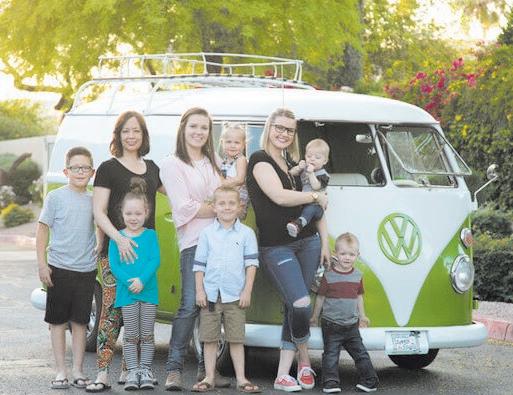



 BY COTY DOLORES MIRANDA AFN Contributor
BY COTY DOLORES MIRANDA AFN Contributor
Kennedy Headlee loves gymnastics, especially the Arizona Gymnastics team from the University of Arizona.
The 8-year-old cheered and smiled watching “her team” compete at the NCAA Regional Semifinals in March, focusing on the action live on her tablet as she sat on a hospital bed at Phoenix Children’s Hospital.
In September 2022, the University of Arizona Gymnastics team “signed” her as the newest member during a Team IMPACT Signing Day celebration. Team Impact is a nonprofit that matches children, facing serious or chronic illnesses, with college and university sports teams.
A a week-old infant, she was diagnosed with cystic fibrosis and two years ago Kennedy endured her first
attack of severe pancreatitis – a swelling of the organ located behind the stomach.
It was hoped it was a one-time only event although approximately 85% to 90% of cystic fiibrosis patients have pancreatic insufficiency, meaning the body doesn’t pass certain chemicals, called enzymes, from the pancreas into the intestines properly.
While visiting relatives in Chicago with her parents Kirstin and Tyson Headlee in April 2022, Kennedy was rushed to a hospital with another painful bout of pancreatitis; this time it required a 10-day hospital stay.
Three weeks after returning home, Kennedy was rushed to Phoenix Children’s Hospital with yet dangerous inflammation of her pancreas.
The youngster faced three more pancreatitis bouts that year and then three more this year – all requiring hospital-
ization.
Now one of the Armer Foundation for Kids’ newer “Armer Kids,” Kennedy has received some hopeful news after intensive research by the Headlee’s discovered the Pancreas Care Center at the Cincinnati Children’s Hospital.
While there for testing in April, Kennedy was found to have a genetic marker (CPA1) that predisposes her to early onset pancreatitis.
Because she was determined to have chronic pancreatitis, it will require surgical removal of her pancreas, spleen, appendix and gallbladder in what is
see ARMER page 29
Kennedy Headlee, 8, su ers from cystic fibrosis and the Ahwatukee-based Armer Foundation for Kids has scheduled a gala next month to raise funds that it used to help children like Kennedy. Gala details are at armerfoundation.org. (Special to AFN)
The YMCA Outreach Programs for Ahwatukee Seniors is a free community service available to seniors in our area needing a little help.
Recently two local women noticed articles in the Ahwatukee Foothills News about the need for volunteers to help seniors remain in their homes and decided to investigate further. This is the interview with Chris Wiederkehr. Kathleen Kretschmar’s account will run next week.
Their answers to a few questions provide insight into the altruistic motives of the remarkable Y OPAS volunteers.
How did you became interested in volunteering with Y OPAS?
My family moved to Ahwatukee four

years ago just months before the pandemic started. We barely got our footing and then everything changed and isolation set in. When the restrictions lifted, I was ready to become more familiar with our community.

When I read the story about Y OPAS and saw the request for volunteers, I reached out immediately. I have a soft spot for older people, wanted to learn more about my community and give back in some way.
Give an example of how you juggle work, family responsibilities, vacations, being a snowbird, etc. and manage to fit volunteering with Y OPAS into your life?
I work full time as a Product Manager for a printing company in the Midwest and juggle schedules (and lots of rides)
for two teenage kids but there is still time to volunteer.
Because I mirror my company’s business hours, I start work early and am usually off by 3 p.m. I look for rides in the late afternoon and on the weekend, a time that I hear is harder to fill. I also run errands while waiting for the senior to be ready for the ride home.
Does your family get involved also and do they approve of the volunteer service you provide?
My family does not get involved but is very supportive of my volunteer role. By example I am teaching these values to my children.
Did your family instill these values in

In September 2022, the University of Arizona Gymnastics team “signed” 8-year-old Kennedy Headlee, second from left in the front row, as the newest member during a Team IMPACT Signing Day celebration. Team Impact is a nonprofit that matches children, facing serious or chronic illnesses, with college and university sports teams. (Special to AFN)
ARMER from page 28
known as a total pancreatectomy with islet autotransplantation.
Kennedy and her parents will face eight to 12 weeks in Cincinnati for the surgery, recovery and required post-op care.
The good news is her problematic and painful pancreas attacks will be eliminated, and yet, her parents note, other health hurdles remain.
“Once Kennedy has her surgery, she will no longer be able to have pancreatitis,” her mother explained. “She will be diabetic, though, but the hope is with the surgery, when they put the islets into the liver, that the islets will ‘wake up’ and Kennedy won’t be diabetic after a year or so.”
Her cystic fibrosis will be a continuing issue, but manageable, said her mother.
The surgery at CCH is slated for Sept. 19; Her birthday six days later will be spent in the intensive care unit.
“I get emotional talking about it,” admitted Kirstin as she reviewed the past painful eight months and her youngest daughter’s upcoming surgery, so far from home.
“Kennedy is the strongest kid I know; no matter what you put in front of her, she will overcome,” Kirstin said of the youngest of her four children.
“Kennedy does struggle with having to go to the hospital and not being able to be a kid, but she’s a trooper and actually keeps me strong because of how strong she is.”
Kennedy’s siblings are all teens: Cooper, 17, Kylie, 16 and Boeden, 15.
Tyson Headlee, a SkiSafe (cq) Insurance maritime claims adjuster who works remotely, will be with Kennedy the entire time in Cincinnati while Kirstin, who works at Phoenix-based Patrick Motorsports, will also be with her daughter the first week and intermittent weekends.
Costs for this necessitated travel and accommodations are among the ways the Armer Foundation for Kids is helping the Headlee family.
“The Armer Foundation has been able to help us raise money that we can use for any medical expenses, such as flights to Cincinnati or any medical bills that we receive,” explained Kirstin.
“And yes, all donations made through the Armer Foundation for Kennedy go directly to our family.”
Tyson expressed his thankfulness for Armer Foundation for Kids’ assistance that is enabling Kennedy’s surgery at Cincinnati Children’s Hospital Pancreatic Center, ranked by U.S. News & World Report as the top pediatric hospital in the nation.
“We are so grateful for the Armer Foundation because without them, we wouldn’t have the resources or funds for Kennedy to be able to have the surgery,” he said.
The Ahwatukee nonprofit Armer Foundation, founded in 2019 by Matt and Jennifer Armer, currently has 19 children, ages infant through 17 years, on their Armer Kids list as shown on their website, ArmerFoundation.org.
see ARMER page 32


















The Phoenix Human Services Department provides programming and services for older adults at 15 senior centers and this Friday, Aug. 18, the Pecos Senior Center, 17010 S. 48th St., will feature a special free program. At 10 a.m., the center will host a Chinese Dance Festival and craft sale.
It will feature dance presentations by members from the Chinese Senior Center and sales of handmade crafts and jewelry. “All active adults in the area are invited to stop by and check out the event and see what the center has to offer,” a spokeswoman said.
Ahwatukee-based HOPE for the Homeless will hold another effort this weekend to help unsheltered people.
It will have a HOPE Bag assembly and meal prep event 4:30-6 p.m. Friday, Aug. 18, (10 volunteers needed) and 9-11 a.m. Saturday, Aug. 19, (75 helpers needed) at Mountain Park Church, 16461 S. 48th St., Ahwatukee.
Volunteers also are needed to hand out the HOPE bags and serve meals from noon-3 p.m. at Andre House of Arizona, 213 S. 11th Ave., Phoenix. Fifteen volunteers are needed and are asked to meet at Mountain Park Church.
“Friday we’ll be setting up,” said Tim Berry, the Ahwatukee resident who founded HOPE for the Homeless. “Saturday we’ll be assembling HOPE bags, sorting donations, and preparing Sunday’s meal. Sunday we’ll serve the meal and pass out some HOPE.”
RSVP at: ibit.ly/RPw8a
Berry also has scheduled a Cruise N Cuisine 5-8 p.m., Sept. 2 at Mountain Park Church. The car show will include a raffle of a 50” TV and every vehicle gets a ticket. “We’re giving $100 cash to the club or group with the most vehicles at the event,” Berry said.
Information: facebook.com/events/s/ cruise-n-cuisine/2420110078167457.
Boy Scout Troop 301will be grilling up the food at the car show.
Former local pastor to host signing of his first book
Former pastor-turned-author Allan
K. Fuller will host his first local signing for his new book, “Overall: Understanding the Epic Christian Story” 6-8 p.m. Friday, Aug. 18. For information on the signing and the book: AKFuller.com.
Fuller was senior pastor at Mountain Park Church for 17 years before resigning in 2021.
Revamped Night for Kyrene has tickets, seeks sponsors
The Kyrene Foundation is now offering tickets and seeking sponsors for a revamped version of the annual Night for Kyrene, which raises funds for the foundation’s mission of helping the entire school district’s community.
It will be held 6-10 p.m. Sept. 9 at Wild Horse Pass and include a plated dinner, cash bar, a wine pull, music by Picaso & Twin Strings and a silent auction that will also be available online.
“Sponsors are critical to the success of our event, and are a wonderful way for local business to make a significant impact in our community,” the foundation said in a release, urging interested parties to email nightforkyrene@ kyrenefoundation.org. Tickets and information on sponsor benefits is at e.givesmart.com/events/wTu.
The foundation also is putting out the call for silent auction items, saying it welcomes gift cards and baskets, services, memorabilia, staycation packages and more.
Donors can contact nightforkyrene@ kyrenefoundation.org.
Confident the heat wave will ebb by September, the Corpus Christi Knights of Columbus Council 10062 is asking golfers to save Sept. 9 for their annual Memorial Golf Tournament.
This year’s tournament honoree is Jim McGrath and this is Knights’ 32nd event.
Proceeds will benefit Knights’ Charities, the K of C Ukraine Solidarity Fund and Folds of Honor Arizona, a nonprofit providing scholarships to qualifying family members of fallen military and first responders.
Registration is taking place now and includes a full round of golf, beverages,
cart prizes and lunch for $140 per player.
The tourney will be at the Arizona Grand Golf Course in Ahwatukee with a 7:30 a.m. shotgun start.
Sponsors are also needed. Three sponsorship levels are available with each carrying a variety of benefits.
Knights of Columbus 10062 Charities, Inc. is a 501(c) (3) organization. Call 480250-2208 and leave a call-back number or visit kofc10062.org to download registration and sponsorship forms.
Janice’s Center, a unique women’s shelter that is being planned by Ahwatukee resident Shanté Saulsberry, will be held beginning at 6:30 a.m. Oct. 21 at McCormick Ranch Golf Club, 7505 E McCormick Pkwy., Scottsdale, on its Pine Course.
The four-person team scramble has room for a maximum 144 players. Breakfast, lunch and prizes will be part of the package.
“This golf tournament is the first for Janice’s Women’s Center and a very important fundraiser to help establish the first safe house offered under the care of JWC to support women and children suffering from domestic violence,” said Saulsberry.
Saulsberry is also seeking sponsors.
Information for sponsors and registration can be found at charitygolftoday. com/sponsor?e=11548&ce=f7ae7b
Saulsberry envisions Janice’s Women’s Center will offer victims comprehensive services that would include can involve legal assistance, counseling, job training, childcare, and more.
The free Dog Fun Festival 10 a.m.- 4 p.m. Saturday, Aug. 19, will include projected 2,000 dogs and their human families, many from Ahwatukee, at WestWorld of Scottsdale, 16601 N. Pima Road, Scottsdale.
The event that will feature dog races, photo ops, K9 stunt shows, vendors and demonstrations, agility course, dog gym, enrichment games, pup cups, bone bar, food, beverage and alcohol and giveaways, prizes and more to ben-
efit the Arizona Humane Society.
The festival is catered to dogs and their people, and the nonprofit will have a “cuddle zone” with available pups to adopt.
The Humane Society last week said the record-breaking heat has saddled it with a record-breaking number of dogs.
“We are on pace to care for 20,000 animals this year which is a number we have not seen in almost a decade,” said Dr. Steven Hansen, AHS President and CEO. “This time of year, we fill up our kennels just as quickly as we clear them out which is why finding new homes for the pets that have already received care at AHS is such an integral part of our System of Care.”
All attendees must RSVP at FREEdogevent.eventbrite.com and will be automatically entered for a chance to win $100 PetSmart gift cards.
About Dog Fun Festival:
Dog Fun Festival is a collaboration of dog services, products and lovers founded in 2022 by Isabelle Hallier to promote wellness and community amount dog owners.
Friends and Neighbors group invites Ahwatukee women
Ahwatukee women looking to make new friends and join a variety of activities care invited to the next Ahwatukee Foothills Friends and Neighbors breakfast brunch at Sivlik Grill 10 a.m.-1 p.m. Aug. 28. The guest speaker is Carrie Chipman, who runs Country Collective Travel Club where she escorts groups all over the world.
Contact Pam Oliver at pamoliver614@ gmail.com or text/call 614-205-2243 for details and to register. The cost of the lunch is $22 and must be prepaid by Aug. 19 to attend.
Information: affanwomensgroup.org/ public.
Nonprofit weight-loss support program at Rec Center
A TOPS (Take Off Pounds Sensibly) Club chapter is meeting at 6 p.m. every Wednesday in the board room at the Ahwatukee Recreation Center, 5001 E. Cheyenne Drive. It’s preceded at 5:30 p.m. by socializing and optional weigh-
see AROUND page 33
you and the desire to help others? Or who or what was your inspiration?
I have enjoyed volunteering from a young age. My siblings also are involved with volunteering in their communities. My first volunteer job was acting as a crossing guard back in 6th grade.
“Since then, I have been a Girl Scout Leader, a youth baseball league board member, a child care provider at church, and more.
“I believe that volunteering offers a two-way benefit. I always feel like I get more out of the interactions than I give.
Why do you think the Y OPAS organization is the best use of your limited time available to volunteer? How do you and your family benefit when you personally donate an hour here or there to help a senior who needs a ride or a cheerful, friendly phone call to someone confined to their home?
One of the key things that made it easy to sign up was that I didn’t have to commit to a regular schedule of volunteering. Our schedule changes week to week
so I look for times that I know I will be available. It is perfect to not be tied to a set time each week.
What do you enjoy most about being a volunteer for Y OPAS? What keeps you motivated to continue volunteering?
I lost my mom 14 years ago when she was only 67. I find myself craving interactions with women who are the age she would be now.
The seniors don’t know it, but they are filling my bucket when they hop in my car for a quick ride. I love to talk to them and ask them questions. Their wise words and observations are priceless.
What types of services do you like to sign up for and how much time does it require from you? Is it difficult to sign up or select a time that works for you?
As a new volunteer I have only pro-
vided rides so far, but would like to try friendly visits in the future. Because I am happy to offer rides on the weekend, I have been able to get to know one of the members because I take her to church frequently.
Each time I see her, I love to ask about her family, her upcoming trips, etc. I look forward to each ride.
How do the clients treat you? Do you feel appreciated? Has anyone touched your heart in a special way?
The clients are definitely appreciative. One day when I was perusing available rides, I noticed a senior had an appointment with a doctor that I recognized. It was my breast cancer surgeon. I knew instantly that I had to take her.
I took the day off from work and scheduled the ride. I felt an immediate connection with her because of our shared medical history. I accompanied
her to the appointment, said hello to “our” doctor, and was there to hear her good news.
When I arrived at her home, she invited me in to show me some special memories we had talked about during the ride. I will watch for any future requests by this senior. I would love to see her again.
What would you say to someone reading this article if they are considering volunteering?
Volunteering for Y OPAS can really fit into any schedule. There are different volunteer opportunities available at all different times during the week and on the weekend, even if you only have an hour or two.
I promise you will find it worthwhile and fulfilling. I encourage people to sign up to volunteer even if their time is limited. Having a large pool of volunteers means all of the seniors can get the services they need.
For more information on becoming a client or a Y OPAS volunteer, contact valleyymca.org/opas or call 602-2126088.

WHY SETTLE FOR ORDINARY?
FRIENDLY DESIGN STAFF HELP GUIDE YOU THROUGH THE PROCESS PLAN
MEASURE DESIGN BUILD INSTALLATION
32 YEARS IN THE VALLEY A+BBB RATING
S KYRENE RD
CHANDLER AZ (602)


ARMER from
page
Each child’s photo is accompanied by a succinct backstory of what health conditions they’re battling.
Kennedy is number 18 of the 19 currently assisted by the organization that is “dedicated to easing the financial burdens of families with children battling extreme medical conditions”.



in charts.
The club was formed in Wisconsin in 1948 and has grown over time to become an international organization.
The 28-year-old Ahwatukee club offers education, fun contests and sharing of weekly progress at its meetings “without negative judgments.”
For more information, contact Meg Hoffman at 602-486-9100.
Fundraiser for Chandler Boulevard lights underway
Christmas may seem a long way off, but for the volunteers helping out with the 2023 holiday lights along Chandler Boulevard, raising the money needed to put on the show starts now.
For the third consecutive year, the Foothills Community Association HOA will be overseeing the holiday lights along Chandler Boulevard. As the largest financial contributor to the display, the HOA has started its fundraising now before hiring the contract winner in September.
“If insufficient donations are received this summer, the lights display could be
reduced for this year,” volunteer Carrie McNeish said, adding the HOA has raised its goal by $50,000 to $100,000.
Sponsors can email McNeish at cmcneish@cox.net and donors can go to gofund.me/e9ced0b2 .
Besides the Foothills HOA, the Club West HOA also is a sponsor along with the Festival of Lights Committee, SanTan Ford and Safeway/Albertson’s.
Sponsors are entitled to several benefits, including a mention on the two homeowners associations’ websites and in the Ahwatukee Foothills News.
To donate by check, make it out to the Foothills Community Association with “ “Foothills Holiday Lights Donation” in the memo field. Mail it to: RealManage, Attn: Cathy Van Galder, 3930 S. Alma School Road, Chandler, AZ 85248.
For over 35 years, the Ahwatukee Toastmasters has maintained a continuous presence in Ahwatukee, providing the know-how, practice and encouragement to help members improve their communication and leadership abili-
ties.
Toastmasters meets 7-8 a.m. every other Tuesday at Esperanza Lutheran Church, 2601 E. Thunderhill Place, Ahwatukee. For more information, call or text Ed Prestwood at 480-603-8359, or search Ahwatukee Toastmasters. The group’s chair is Jianhong Zhou, who can be contacted at smiqua.zhou@gmail. com.
Ahwatukee artist has a coloring book event here Saturday
Ahwatukee artist Sandra Marshall will host a “Coloring Them Home’ event for animal rescues at Cupz and Crepes, 4232 E. Chandler Blvd., Ahwatukee at 2:30 p.m. Saturday, Aug. 19. Marshall created a coloring book sold to help rescues animals. One Love Arizona will benefit from the event’s proceeds, which include a $20 special on her book. RSVP by texting 602-3694555 because space is limited.
Ironwood Library offers free activities for all ages in August
Ironwood Library, 4333 E. Chandler Blvd., Ahwatukee, presents a variety
of programs for children, teens and adults. Unless otherwise noted, no tickets or registration is required.
Info: phoenixpubliclibrary.org.
Babies ages birth to 23 months, accompanied by a favorite adult, will enjoy songs, rhymes, books, and interactive fun Tuesdays 10:30-11 a.m. Free tickets are required and available 30 minutes before programs’ start times at the library’s information desk.
Toddlers ages 24-36 months, accompanied by a favorite adult, will enjoy songs, rhymes, books, and interactive fun Thursdays, 10:30-11:10 a.m. Free tickets are required and available 30 minutes before programs’ start times at the library’s information desk.
Young readers and listeners can sign up for reading time with a registered therapy dog/handler team. Read with Elsa every Tuesday, 4-5 p.m. Read with Raven Thursday 4-5 p.m.



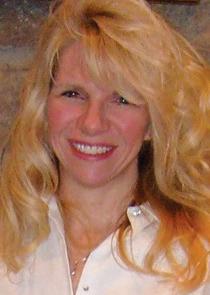

BESTOF 2022
If you thought you have been to a Mexican restaurant lately you probably need to reconsider and visit La Casa De Juana in Ahwatukee. The fare is authentic Mexican, and when we say authentic we mean it, unlike many of the restaurant chains that call themselves Mexican. Upon entering you’ll be dazzled by the colorful décor, the tables and chairs are beautiful, Mexican painted murals, colorful banners hanging from the ceiling and the gracious service with warm orange and yellow tones echoing throughout the restaurant will make this your favorite Mexican restaurant. With great lunch and dinner specials, we have Happy Hour Monday - Sunday from 2 - 6 PM with $5 House Margaritas, $4 Beers, $5.95 Cheese Quesadilla, $8.95 Chunky Guacamole and $9.95 Juana’s Nachos. Live music every Thursday night in our Ahwatukee location and every Friday at our Tempe location. In conclusion The flavorful salsa, the delicious margaritas, the extraordinary and well-priced food will definitely keep you coming back.


Don’t hesitate to stop by the Ahwatukee location
3941 E. Chandler Blvd. (S/W corner Chandler & 40th St) to make your next reservation call 480-626-9295
www.juanashouse.com


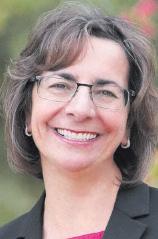 BY DR. NORMA FARIS HUBELE AFN Guest Writer
BY DR. NORMA FARIS HUBELE AFN Guest Writer
Phoenix is electrifying. The City Council aims to have at least 280,000 battery-powered electric vehicles (BEVs) on local roads by 2030. That would be about 15% of all vehicles currently registered in Phoenix.
It’s a grand vision. When the city set that goal in June 2022, there were 40,740 all-electric vehicles registered in the entire state of Arizona. Currently there are about 65,000 statewide.
Several factors are behind the push.
First, there’s the money. Phoenix hosts several BEV manufacturers, a source of high-paying jobs for local residents.
The federal government is offering $7.5 billion in funding to create electric
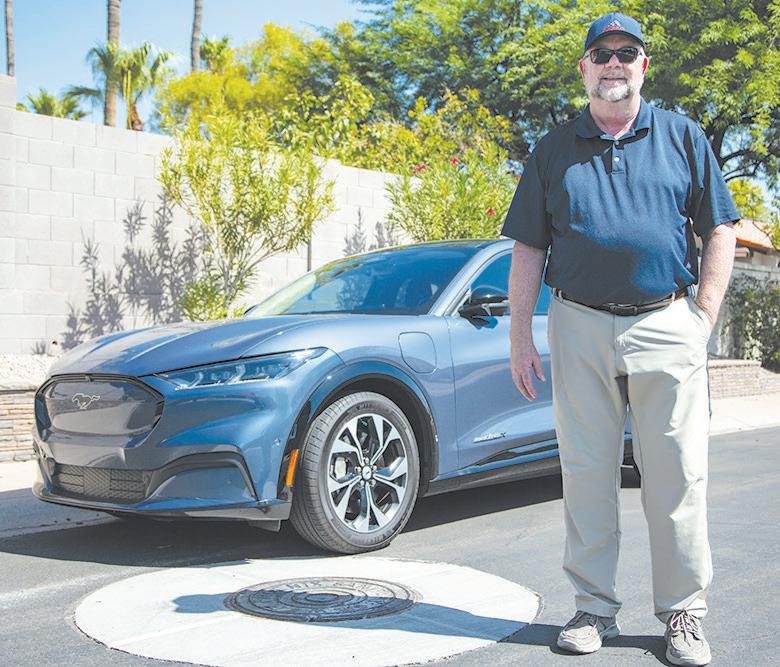
Retired Ahwatukee attorney Rick Potts owns an all-electric Ford Mustang Mach-E.

charging infrastructure nationwide.
Then, there’s the $1 billion up for grabs from Electrify America, a company that owns and manages a BEV charging network.
Concerns about air pollution and climate change also play a role. Maricopa County received an “F” grade for air quality in a recent report by the American Lung Association.
To meet its 2030 goal, Phoenix plans to quickly stand up a BEV infrastructure. That means adding at least 500 charging stations at city properties like parks and 500 more at workplaces. Right now, there are fewer than 2,000 public stations across the entire metro area.
The city plans to buy 200 light-duty BEVs for its fleet and create a charging infrastructure for city employees to use at work.
There also will be investments in underserved communities and changes to permitting and zoning to spur builders to add BEV charging in single- and multi-family developments.
And, Phoenix is not the only one getting electrified.
The Arizona Department of Transportation is seeking public comment on where it should install charging stations in the state highway system.
Those changes may come just in time. Nationwide, industry experts predict that 1 in 4 vehicles sold in 2030 will be a zero-emission vehicle.
When it comes to places that live up to their names, Montessori Peace Academy definitely fits the bill.
The Ahwatukee school, which opened in the summer of 2020, strives to provide students with a peaceful environment that allows children to feel right at home.
As Lauren De Hart, the school’s director and co-lead teacher noted, she and the rest of her staff emphasize daily that being kind to others is the most important practice.
“We are always spotlighting kindness in our classroom,” said De Hart, adding that Montessori Peace Academy offers preschool and kindergarten classes to students ages 3 to 6.
The emphasis on being kind is one of the main reasons Audrey Roodvoets enjoys working at the school as a co-lead teacher.
“Watching the children grow into compassionate and caring people has been a beautiful expe-
rience,” Roodvoets said.
The emphasis on kindness extends to the language that is used to describe what happens in the classroom, De Hart said.
“We don’t have ‘rules’ in our class, we say ‘practices,’” De Hart said.
“This is because the teachers and students are practicing these routines every day, including walking feet, listening ears, quiet voices, hands and feet to yourself and being kind to others.”
Montessori Peace Academy follows teaching philosophies developed by Dr. Maria Montessori in the late 1800s that are centered around following children through their natural stages of development, and focusing on the individual rather than the classroom as a whole.
For example, Roodvoets said, almost all lessons are given on a one-on-one basis, and the children can continue to practice any given lesson throughout the day.
see PEACE page 36
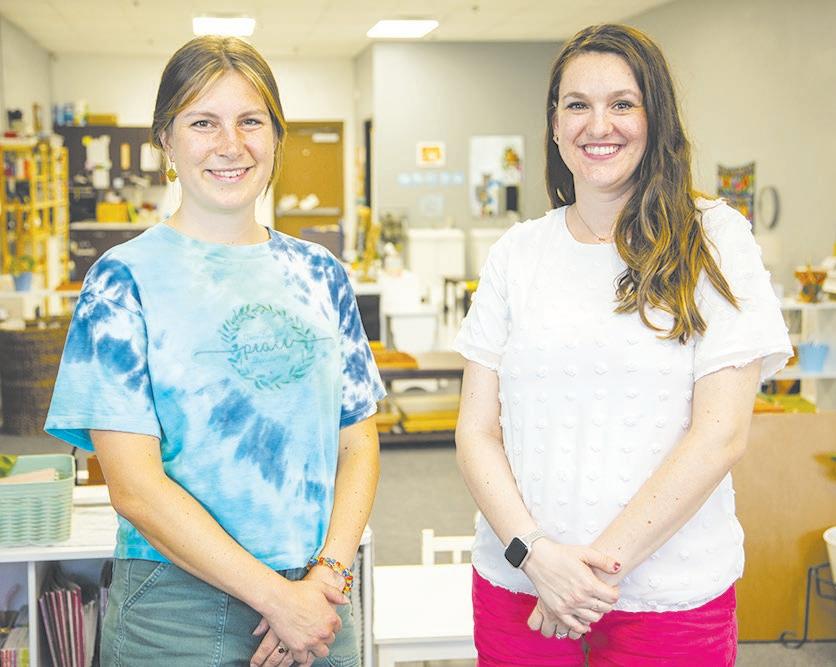
With this kind of public support, and purchase incentives from the federal government up to $7,500, momentum is building. Many people are thinking about buying a battery-powered electric vehicle (BEV).
So, what is it like to own one of these new vehicles?
To answer this question, five local people who gave up their internal combustion engine (ICE) vehicles to buy brand-new BEVs talk about their experience:
Model 3: Owned by Arnie, a retired neurosurgeon in his 80s. He ditched his 2017 Lexus 450 hybrid for a 2018 Tesla Model 3.
Model S: Owned by Mary, a community activist in her 50s. She gave up her 2013 Cadillac CTS for a 2021 Tesla Model S. EV6: Owned by Mark, an engineer in his 60s. He replaced his 2013 MercedesBenz S550 with a 2023 Kia EV6.
Mach-E: Owned by Rick Potts, a retired Ahwatukee attorney in his 60s. He left behind his 2013 Ford Escape for a 2021 Ford Mustang Mach-E.
Air: Owned by John, a physician in his 50s. He gave up his 2010 BMW 325 Turbo Diesel for a 2022 Lucid Air Grand Touring.
[The following responses have been shortened or edited for readability.]
Model 3: My son-in-law was advocating it and got me excited. I bought the Model 3 instead of the Model S because, at the time, it had a more up-to-date design.
Model S: My husband, who is a pilot, was intrigued with the technology. I was onboard because of the environmental aspects.
Mach-E: There was tax rebate, about $7,500. I was interested in the new technology. Plus, I had a long commute and wanted to take advantage of the HOV lanes. I knew that if I needed service, I could always find a Ford dealership.
EV6: I wanted to participate in the electrification of our transportation system. I could afford it and wanted to do it. I thought about a hybrid, but I decided to make a full commitment. Air: My BMW needed too many repairs.

I looked at a number of different models. I wanted a little more horse power and comfort. This Lucid is the one that I really liked the most.
Model 3: I waited for it to be available. I had to make decisions about options, including the paint color. Also, it was a time just before the rebate expired for Tesla. To order it, I just went down to the showcase in Scottsdale. When it was available, they delivered it to my house and went over the features with me. The process was very smooth.
Model S: Very streamlined. All online. We bought it from Tesla, with customization and extended battery. We picked it up in Scottsdale. They texted us with the parking spot number and the security code to get in. We just opened the door. We bought it without even a test drive.
Mach-E: Much better than prior ICE purchases. First, we went onto the Ford website and applied for a reservation number. Then Ford contacted us to place the order online. We needed to select from all the menu options. We paid MSRP, as a cash transaction, with no trade-in. There were no back-and-forth negotiations. We took delivery of the vehicle without ever test driving the car. I was so confident and had such faith in my decision. In summary, it was all painless.
EV6: It was similar to buying a ICE, the
ing system. Ford has a combination of screen and physical nobs and switches. I had to make sure that I was not distracted by the technology. My Mach-E still feels like a Ford. But, it does not have a printed owner’s manual, it’s online. That’s different.
EV6: I don’t have to stop at a gas station. I don’t have to touch that dirty handle, or jockey for a position in a gas line. When I go home, I plug it in.
Air: The infotainment was a little awkward. For example, you can get Sirius radio, but it’s through the internet, not the usual satellite connection.
If you lose the internet, for example in a canyon or even in my neighborhood, then you lose the radio. Overall, Lucid did a nice job with the display panel and safety features. They designed this car from the ground up. It doesn’t feel like a regular car. I really like it.
same pain and suffering. Plus, there was a very long wait for the vehicle to get what we wanted because of supply chain problems.
Air: I went to their small storefront in Scottsdale Fashion Square Mall and did a test drive. To order it, I went on line. When the car came in, I went to their other shop on Scottsdale road, watched some videos, and got some help setting the car to my preferences. Together we went over a lot of details. It took about 45 minutes to an hour.
During the first month, what surprised you the most?
Model 3: The first time I turned it on, it took a couple of hours to initialize itself. Something else that surprised me was when I went to the automatic car wash. To do that, you need to know how to put the car in neutral. I didn’t.
I had to go through the manual online. It’s like learning to operate a new laptop. And in the beginning they kept updating the software, but I got used to it. I bought my Model 3 before they sold 100,000 of them. There aren’t so many updates now.
Model S: It was a steep learning curve. I had to make a deliberate decision to learn it. It doesn’t accelerate or stop like the ICE cars. It’s more like a computer with wheels.
Mach-E: It’s more like learning a new computer, than getting a new car. Perhaps comparable to switching from PC to Mac, or switching to a new operat-
How do you start the car?
Model 3: There was an option to get a FOB. But I use the cell phone app. I go to the app, the car perceives my phone and it starts, I just put it in gear. If I don’t have my phone, I also have a card the size of a credit card. I just touch the bar between the front and rear door and the car opens. And I can start the car. I also have a 4-digit code for security. I must input it before I can drive the car.
Model S: I do have a FOB. I open the door and all the lights come on. I push the brake and that turns the car on.
Mach-E: Yes, I have a FOB. The vehicle recognizes me when I approach with the FOB and it automatically unlocks. And it locks when I walk away. I start and stop the car by pushing a button on the dash. Ford does offer the option to use a “phone as a key” system.
EV6: Yes, it’s like a regular ICE car with a FOB for unlocking and locking. I push a button on the dash to start and stop the car.
Air: Yes, I use a FOB. There is an app for my phone, but I don’t like to have it open all the time. I usually just have the FOB in my pocket. I walk up to the car and the electronics turn on. I put my foot on the brake and put it into gear.
Model 3: There were three levels of Auto Pilot available. I have enhanced Auto
see BEV page 36
Pilot, not full. It works fine. I made some specifications about how the system will drive on a highway, e.g., to travel 9 miles per hour over the speed limit. But I can change that if I wish. I also specified that the car can change lanes whenever it wants. I opted for the maximum follow distance of the car in front of me. The other thing is how aggressive it will be. I chose the Mad Max mode, the most aggressive one. For example, it will pass on the right if that lane is good. Even though it’s called Mad Max, the Auto Pilot is very conservative about when it changes lanes to pass. When the trip is over and we approach an exit, it warns me to take over the driving.
Model S: I do have self-driving. My husband almost exclusively uses the Auto Pilot feature because, as a pilot, he is accustomed to letting a computer drive. He loves it so much he’ll use it to go to Safeway. I personally don’t use it very much. But, it is convenient, especially on long road trips.
Mach-E: Yes, but Ford does not call it “self-driving.” My car has the earliest version of what Ford calls Blue Cruise.
Ford mapped many highways across the country.
If I am driving on one of these, then I can turn on adaptive cruise control and remove my hands from the wheel. It won’t change lanes and pass another car, but it does a good job of staying centered in the lane. But, I still need to pay attention.
There is an infrared system monitoring my face. If I take my eyes off the road, it alerts me to pay attention. In some respects, it’s better than some drivers on the road.
EV6: It’s new so it has all the latest driver-assist technologies, but it doesn’t exactly drive itself. On the highways, I can take my hands off the driving wheel for a short period of time, then the car tells me to put them back on the wheel!
Air: No, it doesn’t drive itself. When I turn on adaptive cruise control, the car will stay in lane but will not pass.
When I first got the car and turned this feature on, it tended to drive close to the left lane. But with the updates, it has gotten better at staying in the center of the lane.





Apart from the plug-in versus gas fill ups, what’s the biggest difference between your BEV and previous ICE?
Model 3: The safety features are much better with the BEV. For example, you have the option for a 360-degrees view. I see everything around the car on the dash monitor in real-time.
So you really don’t need side mirrors or rear-view mirrors. You can do everything by looking on the monitor. Also, on my previous Lexus, I could set my adaptive cruise control. But it tended to drift in the lane. And it couldn’t change lanes.
My Tesla drives dead center in the middle of the lane. And when it changes lanes, there is no oversteer. With each software update, it has gotten better.
Model S: Aside from (the expensive BEV) price, the amount of time it takes to charge rather than fill-up. It’s not inconvenient, but you’ve got to plan for it on the long trips. I usually pack a lunch and eat it when we are charging. Mach-E: Performance is much better. Mine is a rear-wheel drive. It is a fun car to drive because it accelerates very
“If we have a 4-year-old who is able to do addition, and a 4-year-old who is still learning all of their numbers, they won’t be forced to work at the same level. They all work at their own pace,” De Hart added.
Montessori Peace Academy also follows the traditional Montessori belief of giving children freedom within limits, Roodvoets said.
“Mixed age groups allow for a natural dynamic of children helping and learning from each other. Montessori strongly emphasizes practical life skills and educating the whole child,” Roodvoets said.
While Montessori Peace Academy is similar to other Montessori schools in many ways, De Hart said it is different in a very important way.
“Our small class size helps set us apart,” she said.
De Hart and Roodvoets are both looking forward to the first day of school on August 7, and welcoming new and returning students to the classroom.
They are also immensely proud of how much Montessori Peace Academy has grown over the last three years, and how
quickly. I have never gotten a speeding ticket, but this is the car that would do it.
EV6: I love this car. It’s fun to drive. They have seamlessly integrated electronics into our world. It feels like a car that I’m used to. The biggest difference is that I use the regenerative braking. [See response to next question.]
Air: My previous car was a little small and older, so I kind of leaped into the 2020’s with this car. With the updated Apple CarPlay and all the cameras, it’s like having a really modern vehicle. Of course, the ability to accelerate is unbelievable. It has different levels for the acceleration. I put it in “smooth mode.” With 600 horsepower, that’s a real game changer for me. It makes merging onto the highway really nice.
I heard drivers hardly use the brake pedal because the vehicle slows when you take your foot off the accelerator. What is your experience?
Model 3: Yes, I use the maximum regen-
many of their enrollments are the result of enthusiastic parent referrals.
“We have really close personal relationships with all of the families in our school,” De Hart said, adding that she is thrilled the way families have supported her, the staff and the school from the beginning.
“I have really loved the community that has been built from our school. This past school year, completely on their own, a bunch of the dads got together and arranged this whole dad-kid camping trip.
“It completely warmed my heart, and I was so moved that our motto of ‘Small School, Big Community’ essentially came to life.”
1331 E. Chandler Boulevard, Suite 101, Ahwatukee.
602-675-9501 or montessoripeaceacademy. godaddysites.com.
To schedule a tour, call or text or email MsLauren@MontessoriPeaceAcademy. com
BEV from page 36
erative braking so I hardly ever place my foot on the brake. When you take your foot off the accelerator, the regenerative braking slows the car. I don’t think I’ll ever have to change my brake pads.
Model S: Yes, that’s exactly how it works. You learn to slow the vehicle by how much pressure you put on the accelerator, or not.
Mach-E: Yes, the car decides when to use regenerative braking or friction braking. It’s seamless. There are three different implementations of regenerative braking.
For example, you can activate a onepedal mode. As soon as you take your foot off the accelerator, the car starts to brake.
EV6: For regenerative braking, my car has a switch on the steering wheel. It’s an electronic mechanism that is totally different from ICE cars. But there is a brake pedal, too. I use the pedal when I want to be more precise, like stopping in my garage.
Regenerative braking helps to increase the range between charges. It’s fun to adjust my driving and braking to try to increase the range. They advertise 285 miles on a full charge, but I can get the range up to 315!
Air: Yes, I barely touch the brake. Your brain figures it out pretty quickly. As you’re coasting into a red light, you slowly let off of the acceleration pedal. Then, the car slows itself. When you stop, your foot is not on the brake. They made a change with an update. Now, if you are stopped at a red light, for example, the brake pedal is compressed. So if you want to put your foot on the brake pedal, it feels like a regular car.
Model 3: It automates a lot of stuff. For example, if you retract your side mirrors, it asks you if you want to always do it. When I arrive in my garage, they always close.
When I leave the driveway, the mirrors open again. It does the same to the mirrors at the car wash. It knows that I am there and moves the mirrors automatically. It’s the little stuff. I can also share my Google calendar.
The car knows where I am going for an appointment and automatically gives me the map. It knows my particularities,
just like my laptop.
Model S: Not ever having to go to the gas station. I just come home and plug in.

Mach-E: Fun car to drive. Convenient to plug in at home. I don’t wait in fuel lines at Costco. The navigation system is great; it even tells me about temporary road closures like we are having on I-10. For long trips, the navigation system includes the charging stations on the route, how long it will take to get there, and the battery charge level when you arrive. I have an at-home charger, so I don’t need the high-speed chargers they are talking about. My home charger is a lot better than public ones.

EV6: Maximizing the miles per kilowatt, i.e., the range.
Air: I like the driving experience the most. The seats are very, very comfortable. The dash is very intuitive. Overall the driving experience is very, very good.
Model 3: I love it. But my wife doesn’t think that it’s comfortable because she can feel every bump on the road.
Model S: The steep learning curve. Mach-E: Range anxiety. If we wanted to drive to Chicago, we would take my wife’s gas-powered vehicle. My Mach-E will go over 300 miles on a full charge, but the technology is ahead of its time in terms of the infrastructure. There aren’t enough public charging stations for that trip. The infrastructure is much better for a trip between Arizona and California. I’ll be happy when the infrastructure catches up to the technology.
EV6: Using the public charging stations on long trips.
Air: The one thing that frustrates me the most is the range. One reason that I bought the Lucid was because of their advertised 400-450 range but I am only getting about 60% of that.
When I got a battery fault problem, they replaced all my batteries. When I complained during the winter months that I wasn’t getting the advertised range, they said that it was because “it was too cold.”
Then, when I complained during the summer months, they said that it was because “it was too hot.” I bought the car so that I could take it on a 400-mile trip and not have to worry about range. But I am not going to do that and risk getting stuck.
What advice would you give to a person thinking about buying a vehicle like yours?
Model 3: If you are prepared to learn about it, then you will have a great time. A friend tried one at a rental company and found it sufficiently bizarre. He returned it soon after he left the garage. If you are ready and willing to learn about all its potential, I think that the Tesla is unbeatable.
Model S: Talk to other Tesla owners. Make sure that it fits your lifestyle. Mach-E: I wouldn’t buy the car if I couldn’t have a home charger. Build the cost of the charging station and installation, about $1,200, into your purchase decision. Otherwise, you are at the mercy of the public chargers that are more expensive and less reliable. When the other makers adopt the Tesla charging technology, then it will make life more convenient. Also, it is not good for towing a vehicle. And, it is not for someone who is afraid of new technology.
Make sure that the vehicle fits their dayto-day requirements. Personally, I like it so much that if my car were wrecked today, I would go out and buy another one tomorrow.
EV6: Range isn’t that important. That is the thing that everyone is marketing, but the rapid chargers are so fast that it’s not that important. Even driving around town, range is not a big deal.
A vehicle with a 150mile range would be totally functional for 99% of my driving. Phoenix doesn’t need to put in 500 public charging stations. People can go home and charge their vehicles. The state needs to put them off the freeways and outside the city for those longer trips.
Air: Do your homework. There are so many models coming from difference car companies, like Polestar, Rivian, Mercedes. There are lots of choices.
I am happy with Lucid because every time that I have had a complaint, they have come to my house. I also suggest that you look at the range, then take a percentage off the advertised value and make sure you are happy with that number.
If I were in a wreck, and I got a check from the insurance company, yes, I would buy this car again. I really like it.
The internal combustion engine has powered automobiles for over 130 years. Now we may witness that technology fade as public and private entities push to electrify our transportation system. These early adopters are leading the way. Whether that effort succeeds is up to car buyers in Phoenix and around the world.
Ahwatukee resident and Chandler business owner Norma Faris Hubele is professor emerita of Arizona State University.
She created TheAutoProfessor.com, a website that helps families make safer car choices.
Last year she also published “Backseat Driver, The Role of Data in Great Car Safety Debates,” a detailed look at how for decades, car safety advocates, manufacturers, and lawmakers in the United States have clashed over whether to make automobiles safer.
All sides armed themselves with data in the hopes of winning the great car safety debates. The data were always in the backseat, merely supporting di erent points of view.
Published by Routledge (routledge. com), the book examines the role data play in protecting people on the road.

Billy Eastep and his family had a decision to make when he was preparing to enter high school.
He grew up in Ahwatukee, playing lacrosse and football with several of his friends who are local to the area. His home was in the Desert Vista boundary, which is where most of those friends ended up when they entered their freshman year.
But Eastep, who had attended the highly academic Summit School for years, had other plans to continue his goal of receiving the best education possible. So, he enrolled at Brophy for his freshman year.
Now a senior, he believes it was one of the best decisions he’s ever made.
“Being able to practice my faith and de nitely the education,” Eastep said. “Brophy’s got such a great tradition. Everything about it, I loved. at’s why I came here.”
Eastep began to thrive at Brophy early on.

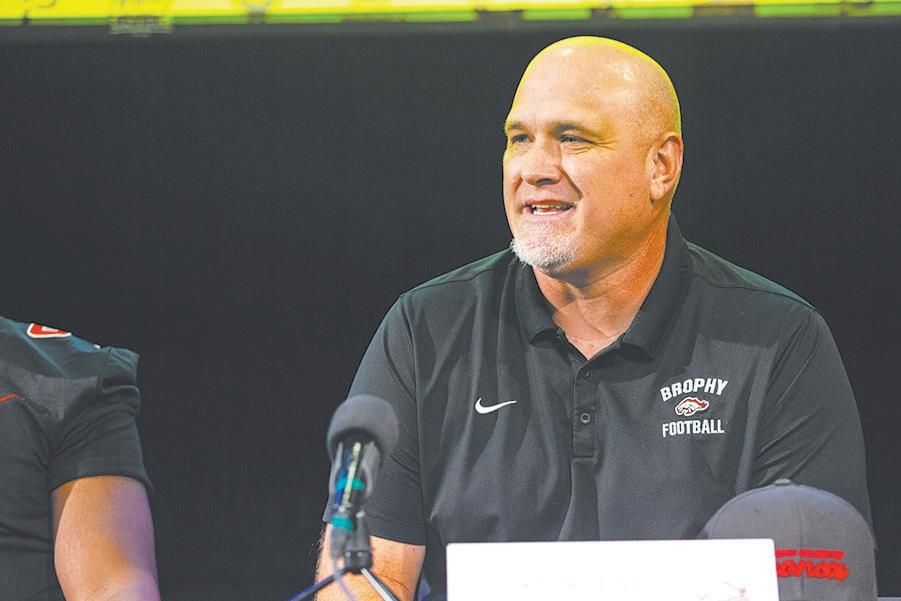
 (Dave Minton/Sta Photographer)
(Dave Minton/Sta Photographer)
He joined the Bronco lacrosse team, a perennial power in the club sport. He also began playing football under Head Coach Jason Jewell, a longtime coach
for Glendale Community College who was familiar with the East Valley and Ahwatukee during his time recruiting.
Eastep was successful in both sports,
as college recruiters took notice of his ability to play two physical sports in one academic year. He quickly became one of the top safeties in the football program despite his slender 5-foot10, 160-pound frame as a sophomore.
He recorded 47 total tackles in his rst year playing at the varsity level and was poised for a breakout junior season. en, that plan was derailed by a season ending shoulder injury.
“It started in lacrosse then I was injured in the preseason game before my junior year,” Eastep said. “Talking it over with my family, (surgery) was the best option for us. It was a tough rehab but day in and day out keep grinding for
see EASTEP page 39
Ahwatukee holds a special place in the heart of Chad Waits.
It’s where he grew up, attending Kyrene de las Lomas Elementary School and Centennial Middle School before moving on to Mountain Pointe and eventually the University of Arizona. He returned to the Valley after Arizona to attend AT Still University in Gilbert for graduate school. A few years later, he and his wife once again made Ahwatukee their home.
Now, he’s giving back to the community that helped shape who he is today as a Doctor of Physical erapy by opening his own practice to serve Ahwatukee
residents.
“ is has been my community that I’ve grown up in,” Waits said. “I’ve grown attached to it over the years. We love the community. ere’re so many people doing great things here. We’re excited to open up our practice within the community as well.”
Located on the southwest corner of 48th Street and Chandler Boulevard, Waits Physical erapy o ers top notch service to a wide array of individuals.
Since opening its doors July 31, Waits has serviced those who need routine physical therapy for an injury to local high school athletes preparing their bodies for the season while chasing a Division I college scholarship.
“My demographic looks like Ahwatukee,” Waits said. “I’ve got young athletes. I’ve got D1 prospects. I’ve got end-stage arthritic and total joint replacement rehab (patients). We’ll treat people that have vertigo.”
Waits has been practicing physical therapy for over 17 years. During that time, he had always dreamt about opening a practice to service his Ahwatukee neighbors.
He moved back to the city in 2010 after completing his doctorate at AT Still. He and his wife started a family during that time. His daughter is a volleyball player at Desert Vista while his sixth-grade son is an avid cross country runner and club baseball and basketball player.
Waits’ love for physical therapy started at a young age. He’s always been keen on helping people and learning about the extracurricular activities they enjoy. He nds motivation from people who doubt their ability to return to sports or everyday life in a normal capacity before their injury occurred.
“Challenge accepted,” Waits said. “Let’s go. Let’s gure out how we can keep you moving and doing the things you love.”
Waits Physical erapy o ers a variety of services for patients. From general rehabilitation after a break, sprain or other injury, to injury prevention.
see WAITS page 39
8 months. It’s tedious but it’s what it took to get healthy.”
Surgery was successful on Eastep’s torn labrum. But the rehab and inability to suit up with his teammates proved to be another challenge.
He remained involved, however, helping coach some of the younger players and motivating everyone on sidelines every Friday night. But he admits it was tough to see his team go 3-8 on the year with most losses by a touchdown or less.
Eastep felt he could’ve made a difference in those games and could’ve changed the course of the season entirely. But he knew he had one more chance as a senior to make a di erence. He attacked the weight room hard and was cleared by doctors for full contact.
Now, as Brophy prepares for its season opener Aug. 25 against Williams Field, it will have its starting safety back. But this
He also o ers services like cupping, dry needling, soft tissue immobilization, spinal manipulation, and pre-employment screenings. Waits is also certi ed in Pilates, o ering a di erent form of therapy that better suits some patients.
Waits prides himself on the tentative work he does when treating a patient. He and his team will take measurements to monitor improvement. Often that includes a speci c exercise that causes pain. Waits and his team will develop a plan for improvement and remeasure a patient’s progress. His team is also trained to screen patients for underlying issues that may be causing pain such as fractures, breaks or other neurological issues. Just like a primary care physician would refer an ankle spring to a physical therapist, Waits can refer patients with more serious issues to specialists.
Athletes also can receive sports speci c training at Waits Physical erapy. Waits partnered with Geordie Hackett, an athletic trainer with over 20 years of experience. Together they developed a plan to measure an athlete’s strength in a variety of exercises. Once the athlete is
time with a bigger frame.
“He was an All-State player as a sophomore. He was a 5’10, 155-pound corner then and now he’s a 6’1, 200-pound safety,” Jewell said. “ e biggest thing is his leadership skills. Last year, despite the injury, Billy was the runner-up in our team captain vote.
“Getting that leadership back is tremendous for us.”
e labrum tear didn’t slow down Eastep’s recruitment.
His sophomore tape still opened the eyes of colleges. His rst Division I o er came from Idaho State in February 2022. Washington State gave him his rst Power Five o er on May 3 of the same year. Just days later he helped Brophy win the lacrosse state title.
He took several o cial visits and competed at multiple college camps once healthy this past spring. at’s when the Ivy League started calling.
Yale, followed by Princeton, Harvard and Columbia o ered him football scholarships. Idaho and Northern Arizona came in, too. He took o cial visits to both Yale and Princeton this summer.
On July 17, he committed to Yale.
Eastep believes he still has much to prove this season after missing all of last year. He knows this could be a special season for Brophy.
e Broncos have one of the biggest and athletic o ensive lines in the state. On defense, he leads a talented group of defensive backs while defensive ends Devan Kennedy and Mardale Rowe take care of the trenches.
Bastian Vanden Bosch, an Ahwatukee resident and son of former NFL defensive end Kyle Vanden Bosch, will lead the linebackers as a sophomore. His father was hired on as Brophy’s strength coach.
“We have a very special defense,”

Eastep said. “Everyone is buying into the culture and there’s a lot of energy, people ying around. We’re going to transition that to the game.”
Eastep said many of his Ahwatukee friends were happy for him when he committed to Yale. He still keeps in regular contact with all of them, including Mountain Pointe running back Christian Clark, a Texas commit.
Eastep said he’s looking forward to playing both Desert Vista and Mountain Pointe this season. He knows there may come a time where he meets Clark in the open eld. He was coy with his answer about who would win the battle, showing respect for the 6-foot, 205-pound back.
Overall, he’s excited to play against some of his Ahwatukee friends.
“It’s always good to see them. Good competition,” Eastep said. “I see both of them as a rival, so to speak.”
window of time. At the end of the day, we want to know if they got value out of this.”
Since opening the doors to Waits Physical erapy, Waits has received positive feedback from the Ahwatukee residents who have visited the practice.
But now, he’s ready to take on even more patients.
He and his team will host an open house on Saturday, Aug. 26 from 10 a.m. to 12 p.m. Food and drinks will be provided from local Ahwatukee businesses. His entire team will be in attendance to meet and interact with members of the community while showing them the state-of-the-art facility.
In his eyes, it’s a way of gaining trust and extending an open hand to the community to let them know there is another option to treat their ailments. at’s been his dream for many years and now he’s achieving it.
evaluated, they develop a training program that will tackle some of the weaknesses and make strengths even stronger.
“It’s a little bit more personalized in that sense,” Waits said. “I believe that’s what separates us from other programs that will just put together exercises in a
“I know when people come here and see this and see what we can o er they’re going to love it,” Waits said. “I just need people to know I’m here.”
For more information about Waits Physical erapy, visit waitspt.com.



For the second year in a row, Phoenix Bioscience Core is launching its Artists + Researchers Exhibition Saturday, Aug. 19, at the Bentley Gallery in Phoenix.
Ten artists from around the state paired with 10 researchers from the state universities and companies like TGen to create pieces re ecting each researcher’s work.
“As the director of art and medicine for the University of Arizona College of Medicine—Phoenix, I’m always looking for di erent things to add to our curriculum for medical students,” said Phoenix Bioscience Core Arts Committee Chair Dr. Cynthia Standley.
So when Standley learned that the Keck School of Medicine at the University of Southern California had partnered artists with researchers to make artwork
Northern Arizona University professor Dr. Amy ArmstrongHeimsoth, left, and Ahwatukee artist Suzanne Whitaker show o their board game “Now Go Be Normal” for the Phoenix Bioscience Core’s Artist + Researcher Program Year Two exhibit during its debut last weekend.
(David Minton/Sta Photographer)



based on their projects, she knew she had found a way to bridge the gap – and artists agreed.

“I think that there is a di erence between the disciplines when it comes to academics and art and academics and
science, technology, engineering and math, but historically, science and art have always been very close and we’ve worked really closely with scientists,” said Mesa artist Zach Valent.
“Leonardo da Vinci and Michelangelo are some pretty prominent artists who have worked with architects and engineers,” added Valent, who created a concrete piece for the exhibit.
e art mirrors more modern scienti c studies like the impact of AI from a behavioral health economics standpoint and the impact that the foster care system has on child development.
“We all realize that the arts are a language for everyone and what better way to try to explain a lot of the research that tends to be hidden away in labs and in clinics where people just don’t have access to it or they don’t even know what’s
Pink Floyd’s “ e Dark Side of the Moon” was released 50 years ago, and e Australian Pink Floyd Show is celebrating right along with it.
e tribute act is bringing its show to the Chandler Center for the Arts on Sunday, Aug. 20, and the Fox Tucson eatre on Wednesday, Aug. 23.
Vocalist Chris Barnes said the gigs show the album’s wide reach.
“As I’ve stood on the stage, playing the album, you realize how much it means to so many people,” Barnes said. “It’s a masterpiece. It’s an honor to play it.”
e Australian Pink Floyd Show
has sold more than 5 million tickets in 35 countries since it was founded in 1988 in Adelaide. Even Pink Floyd bassist David Gilmour believes: He recruited them to play his 50th birthday party.
Australian Pink Floyd also celebrated the 30th anniversary of “ e Dark Side of the Moon” in 2003, when it added backing vocalists and a saxophonist. ey performed the album in its entirety in 2003 and 2004, marking the rst North American tour. A DVD of the Liverpool Summer Pops show was available. Its resume also includes stops at Glastonbury Festival and London’s Wembley and O2 arenas. is year, the focus is on “ e Dark Side of the Moon.”
“At our shows, we’re playing the
album in its entirety, along with other aspects of Pink Floyd, including from the psychedelic ’60s to the big albums of the ’80s and ’90s. It’s literally all eras of Floyd. e main thing is we’re celebrating ‘ e Dark Side of the Moon’s’ 50th anniversary.”
e Manchester, England, native discovered Pink Floyd through his brother, with whom he shared a room. He was captivated by the Pink Floyd album “Relics” at age 5. He was, admittedly, “absolutely terri ed” of “Interstellar Overdrive.”
see PINK page 42
Manchester, England, native is the frontman for The Australian Pink Floyd Show. (Mark Gibson/Contributor)

going on,” Standley said.
Standley began searching for the second cohort of researchers and artists nearly a year ago.
e selected artists were given information about researchers and the cohort met at an event that was like speed dating, with artists and researchers giving elevator pitches about the work.
Among the artists is Ahwatukee muralist Suzanne Whitaker, who was introduced to Scottsdale resident Amy Armstrong-Heimsoth, the Department Chair + Associate Clinical professor of occupational therapy at Northern Arizona University.
Armstrong-Heimsoth has spent the last six years studying the American foster care system.
“ is piqued my interest because, as Amy says, nobody really thinks about these children in that demographic and I knew nothing about them,” Whitaker said.
“ e subject itself was just heartwrenching to me, especially because of my work with teens as a facilitator for grief, because I am an activist and a
mother of two young adults nding their way. I just felt like (this research) really tapped into all of that for me.
“I just had this feeling of ‘what could I do to help?’”
So, Whitaker partnered with Armstrong-Heimsoth and the Phoenix nonpro t OCJ Kids, which works with foster and at-risk children, via Zoom, and learned about the kids’ struggles.
Whitaker began thinking of typical memories of playing board games with family, something many foster kids likely have not experienced, and decided to model her art piece after a gaming board, similar to games like Mouse Trap and Life, to help educate people about children in the foster care system.
Her plastered board features interactive elements like cards, pieces and traps and the pieces include pictures of foster children.
“I’m hoping (this art piece) increases awareness that there is this population of youth that are out there, that despite all the programming and all the billions of dollars that are spent on helping with




PINK from page 40
“As a teenager, I saw the Pompeii concert from 1971,” said Barnes, 46. “I heard ‘ e Dark Side of the Moon’ age 15. I couldn’t believe it. It was this long, continual piece of music.
“I never heard anything like it. It was prog rock but not in the 500-notes-asecond way. Pink Floyd stands alone in its own little box.”
The Australian Pink Floyd Show: The Darkside 50 Tour
WHEN: 7 p.m. Sunday, Aug. 20
WHERE: Chandler Center for the Arts, 250 N. Arizona Ave., Chandler
COST: Tickets start at $68
INFO: 480-782-2680, chandlercenter.org

EXHIBIT from page 41
transition programming and extended foster care and things like that, their outcomes are terrible,” said ArmstrongHeimsoth.
“I really want people to be aware that we have this, we have this subpopulation of people here in Arizona who really have the cards stacked against them and I feel like everyone in Arizona has a responsibility to help improve the outcomes.”
Other works veer into less sociological studies – like Gilbert artist James Angel, who paired with Chad Stecher, an assistant professor at ASU’s College of Health Solutions who studies behavioral health economics.
ey had the idea of using arti cial intelligence to create queries that show

how people could use technology to improve their lives.
“After learning about his research, the piece went through several iterations in the design process,” Angel recalled, explaining:
“What we did is we got a lot of outputs from asking AI questions and then created a piece that displays how the world could witness a remarkable transformation in health care where the power of behavioral economics, human creativity, and technology converge and the full integration of cutting-edge advances that will reshape the way we understand human behavior and improve well-being.”
Valent was paired with Dr. Derek Cridebring, the director of the Molecular Medicine Division at the Translational Genomics Research Institute (TGen) in Phoenix.
cate that it has cancer inside of it,” Valent said.
“So, I chose to convey his research and the space that he exists in by adding paper documents that were used inside of his research into the piece while constructing a piece that one might think is like a medical illustration or something that you would see through a microscope when thinking about genetics research and cellular research.”
Standley hopes that throughout this process, the artists will be able to grow through their respective mediums.
“It’s really important for us to see that the artist is going to grow in their medium and that they’re trying something they’ve never tried before,” Standley said.


Valent created a glass and cement medical illustration of cellular interactions and extracellular space that might be seen through a microscope.
“His work relates to some research that I’ve always been interested in about how we can utilize communication between cells to better make the body communi-
“We want them to grow and try things that they haven’t even tried. And I’m really excited about the second cohort.” e exhibition will be on display at the Bentley Gallery, 250 E. McKinley St., Phoenix, Aug. 19-26 and will reappear at the Phoenix Bioscience Core building Sept. 14.
Information : bentleygallery.com/ exhibition and/phoenixbiosciencecore. com/pbc-and-the-arts.



1 Solidify
4 Tummy muscles
7 Rum cake
11 Sir Guinness
13 Cistern
14 Modern taxi rival
15 Wife of Jacob
16 Melody
17 Shoe fillers
18 Wash thoroughly
20 Canadian flag emblem
22 Uncivilized
24 Prepared potatoes
28 Medium
32 Condition
33 Orem's place
34 Talk on and on
36 Actress Merrill
37 Talk a blue streak?
39 Extreme
41 Tolerate
43 Light brown
44 Tropical tree
46 Salon sounds
50 "-- and Away"
53 Charged bit
55 Duel tool
56 Fan publication
57 Bar bill
58 Pro --
59 Mr. Stravinsky
60 JFK info
61 Author Brown
DOWN
1 Guys' dates
2 Power co. supply
3 Tragic king
4 "Selma" director DuVernay
5 Release money
6 Throat a iction
7 Self-serve meal
8 Honest politician
9 Spell-o
10 Illustrations
12 Communal meal at a place of worship
19 "Humbug!"
21 DDE's opponent
23 Peruke
25 Secular

26 Sicilian spouter
27 Bargain
28 Brownish purple
29 Dazzle
30 Lawn party site
31 Automobile
35 Cudgel
38 Epoch
40 "-- Kapital"
42 Select group
45 Castle defense
47 Apple tablet
48 Anti-fur org.
49 Penn or Astin
50 Submachine gun
51 Glutton
52 Family card game
54 Cagers' gp.



f you’re from Detroit, I hope this column brings you many happy and delicious memories.
If you know someone from that area, just ask them about the iconic, fun and fabuloustasting Bumpy Cake and then sit back and watch them smile.
Once you’ve heard of Sanders Bumpy Cake, you may become as obsessed as I am over this decadent chocolate cake with white icing “speed bumps” piped along the top and then covered in a rich and creamy pourable chocolate ganache. Think Hostess Cupcakes, only much more fun and just as tasty.

Sanders Bumpy Cake has been around since 1875. Ask anyone from Detroit and they will tell you that this is the go to cake often purchased for special occasions
Cake Ingredients:
• 2 cups all purpose flour
• 2 tsp baking powder
• 1 tsp baking soda
• 1 cup unsweetened cocoa powder
• 2 tsp granulated espresso powder
• 2 cups granulated sugar
• 1 tsp salt
• 1/2 cup plus 2 TBSP vegetable oil
• 1-1/2 cups buttermilk
• 2 large eggs, room temperature
• 1 tbsp pure vanilla extract
Speed Bump Ingredients:
• 3/4 cup shortening
• 1/4 cup butter
• 2 tsp vanilla powder (or 1 tsp pure vanilla)
• 5 tbsp half and half or heavy cream
• 6 cups powdered sugar
Ganache Ingredients:
• 16 oz bittersweet chocolate, chopped
• 2 cups heavy whipping cream
like birthdays, anniversaries and holidays.
So get the electric mixer out, and see why this is the ultimate treat for Michiganders, and have a blast going over the speed bumps!
Preheat oven to 350 degrees. Coat a 9 x 13 inch casserole dish with cooking spray.
Make the cake. In the bowl of a stand mixer or with electric beaters, combine the flour, baking powder, baking soda, cocoa powder, espresso powder, sugar and salt. Whisk on low to combine.
Add the oil, buttermilk, eggs and vanilla. Blend to fully combine, creating a loose batter. Pour into prepared baking dish and bake for about 30-35 minutes or until toothpick comes up clean.
Cool for at least 30 minutes and then freeze for several hours.
Make the speed bumps. Beat together the shortening, butter, vanilla, cream and powdered sugar until firm. Transfer to a piping bag with a large round top and refrigerate for 15 minutes.
Pipe rows of speed bump icing in rows lengthwise on top of chilled cake, about ½ inch apart. Return to freezer until speed bumps are frozen solid.
Make ganache. Place chopped chocolate in a medium heatproof bowl. Heat the cream in a small saucepan over medium heat until it begins to gently simmer. (Do not bring to a boil.)
Pour cream over chocolate, and then let it sit for 2–3 minutes to gently soften the chocolate.
With a rubber spatula, slowly stir until completely combined and chocolate has melted. Let cool slightly. When speed bumps are frozen or very firm, pour ganache over the cake and the speed bumps to cover completely.
Refrigerate until ganache has set up. Serve chilled or at room temperature.

















